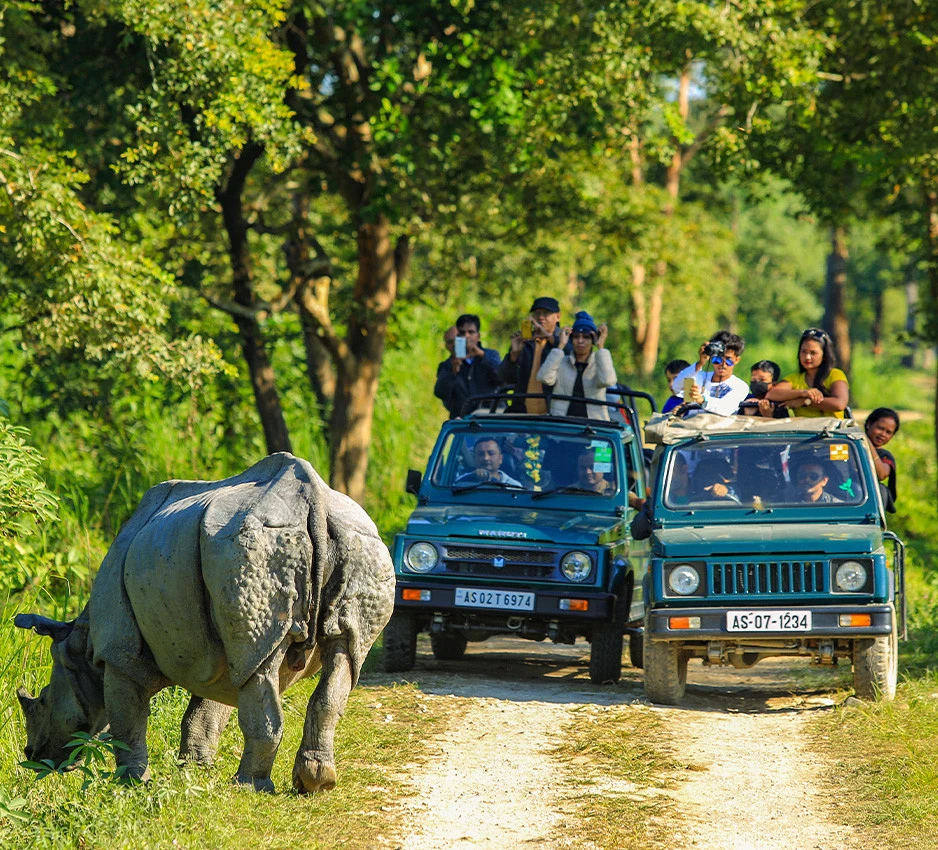
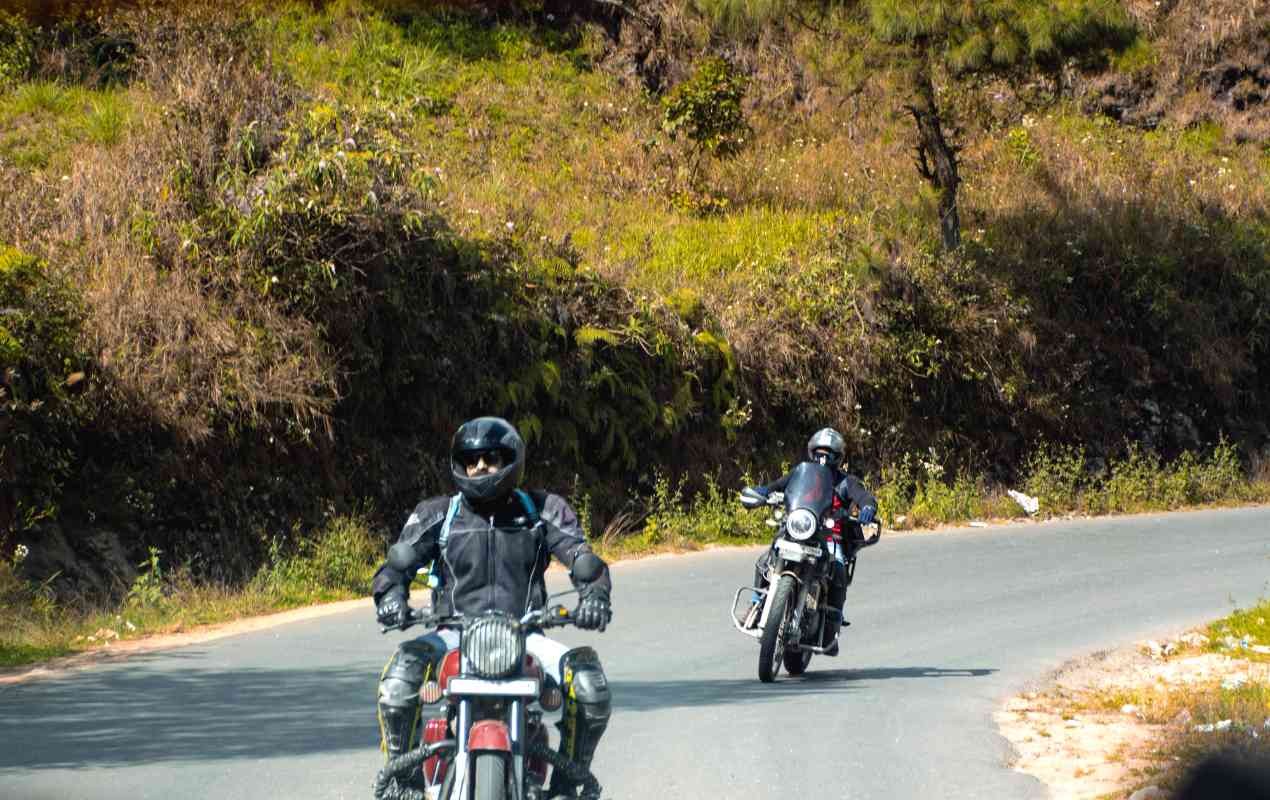
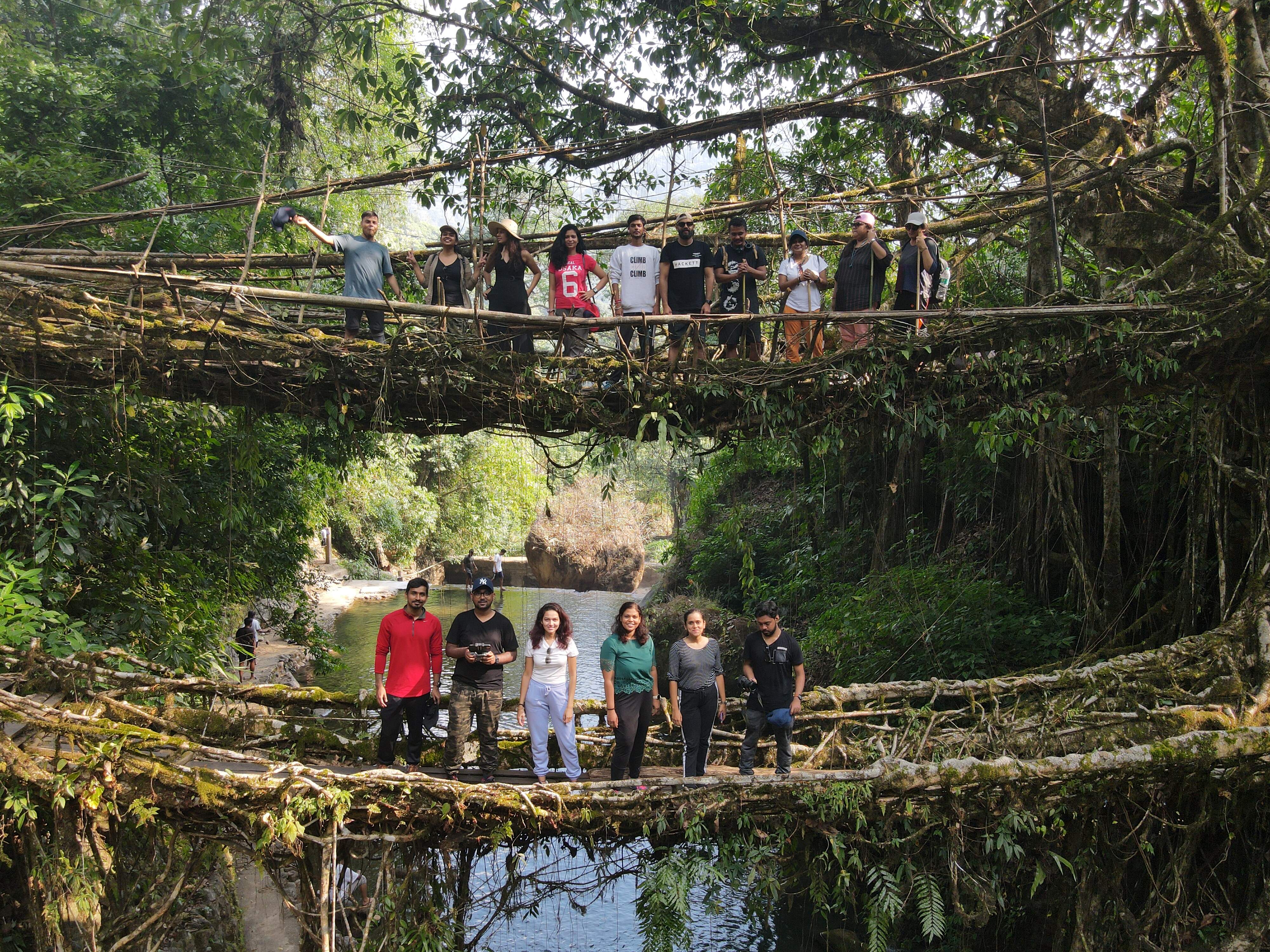
.png)
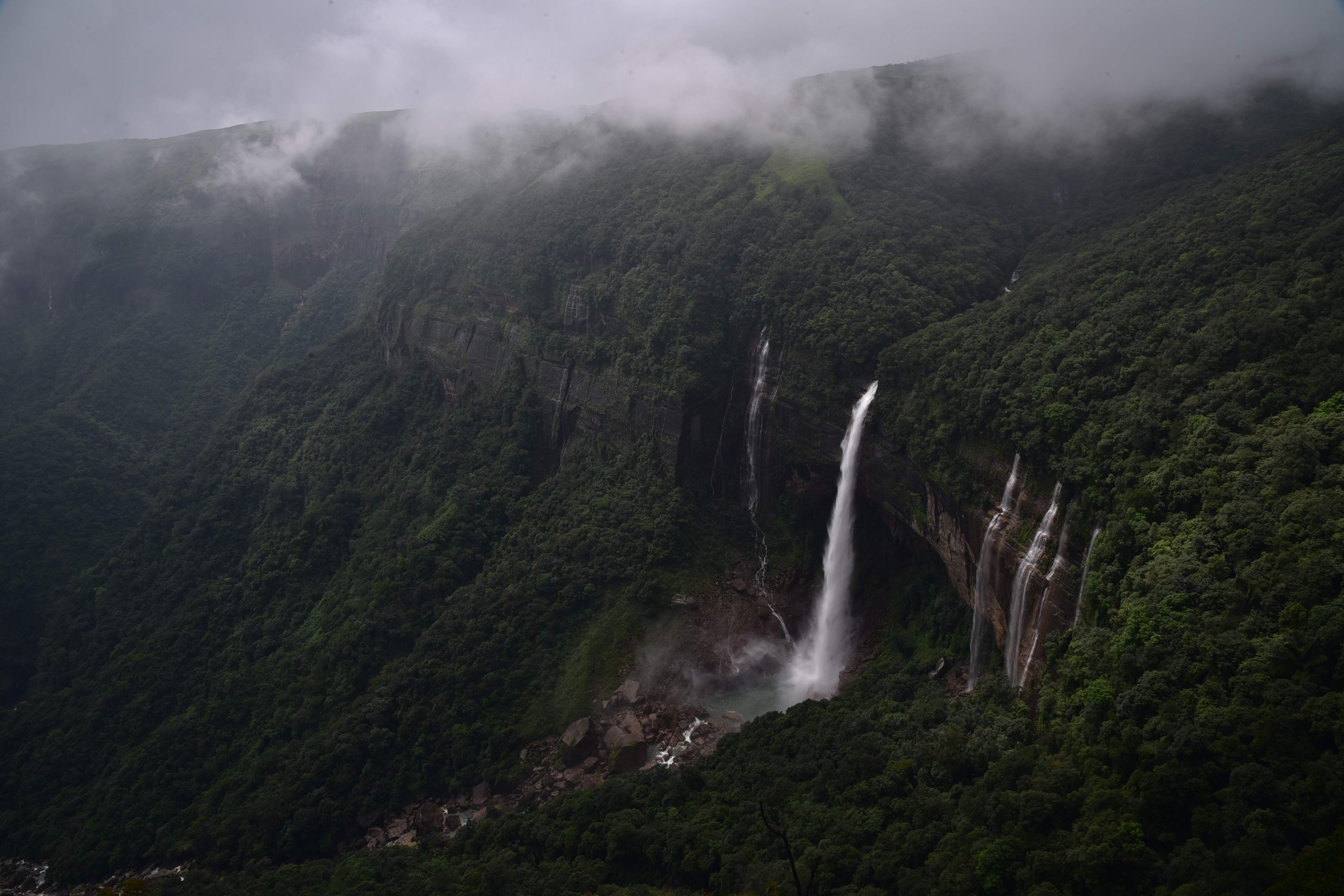
Meghalaya with Kaziranga Backpacking Trip
Details
Inclusions
Safe Travel
Flexible Cancellation
Easy EMI
Certified Captains
24/7 Support
Overview
Meghalaya is famed as a backpacker’s paradise for several reasons especially its natural diversity, from rainforests to mountains, waterfalls to lakes, the abode of clouds is nothing short of a tropical paradise. This trip has been especially crafted for those seeking a rejuvenating yet gripping experience, where you get to explore the best of Meghalaya and the fabled UNESCO World Heritage Site, Kaziranga National Park. In India, the northeastern region comprises the seven sisters, among which Meghalaya stands as one state. It boasts the majestic beauty of the Great Himalayas, numerous rivers, breathtaking waterfalls, and serene lakes. A road trip to Meghalaya promises an exhilarating adventure, allowing you to immerse yourself in the magical landscapes and captivating sights. Situated at high altitudes, Meghalaya offers respite from the scorching summer heat, with temperatures hovering around 10-12 degrees Celsius, making it an ideal destination to escape the sweltering weather.
Exploring Meghalaya is a delight for any traveler, with renowned attractions such as the Living Root Bridges, Laitlum Canyon, Umiam Lake, Mawlynnong Village, and Seven Sisters Falls captivating visitors for years. A highlight of this trip is the safari to Kaziranga in Assam, an exhilarating experience not to be missed. The Elephant safari in Kaziranga stands out as one of the best wildlife experiences in this Meghalaya with Kaziranga backpacking trip, offering glimpses of majestic creatures such as tigers, lions, one-horned rhinoceroses, water buffaloes, elephants, swamp deer, and a plethora of bird species. Moreover, Meghalaya's rich culture, influenced by its history, is evident in the skilled craftsmanship of its people, showcased through traditional bamboo weaving, wood carving, and other artisanal endeavors. Meghalaya offers a plethora of activities to indulge in, with trekking being a particularly thrilling option. Camping amidst its picturesque landscapes allows for a rejuvenating escape from the hustle and bustle of daily life. Adventurous souls can also partake in activities like bungee jumping, rafting, and excursions, adding excitement to their Meghalaya experience. Exploring remote villages and heritage sites further enriches the journey, providing a glimpse into the region's rich cultural tapestry.
Gallery


.png)

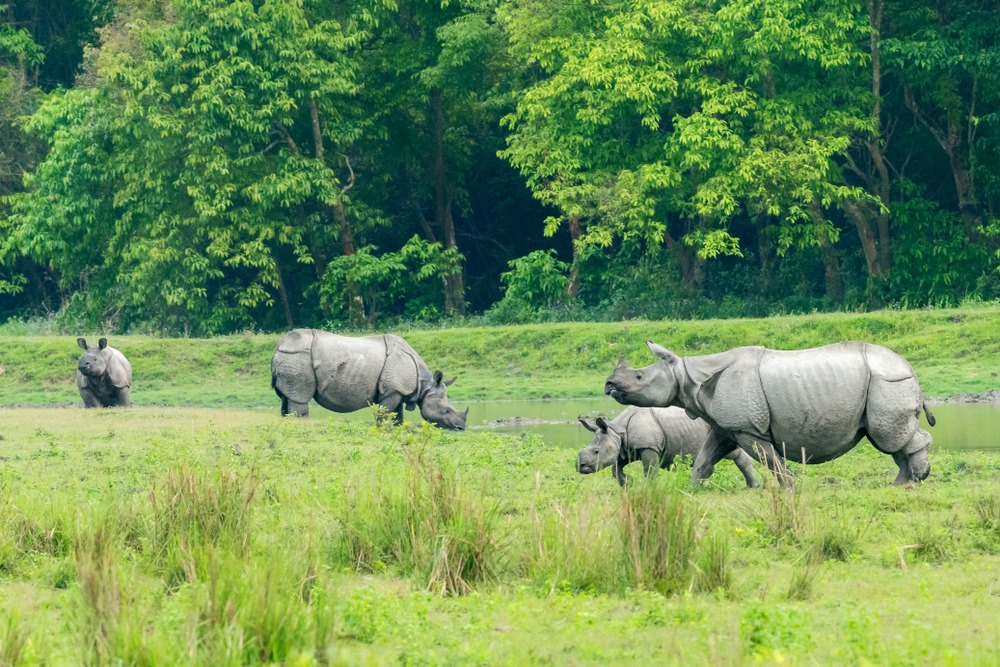
Itinerary
1
Day
Guwahati Arrival transfer to Shillong (98 kms, 4 Hours)
2
Day
Shillong to Shnongpdeng (88 kms, 3 Hours)
3
Day
Dawki to Cherrapunji (90 kms, 3 Hours)
4
Day
Trek to Double Decker Bridge | Overnight Stay in Cherrapunji
5
Day
Cherrapunji to Shillong (54 kms, 1 Hour)
6
Day
Shillong to Kaziranga (252 kms, 5 Hours)
7
Day
Early Morning Safari | Kaziranga to Guwahati (191 kms, 4 Hours)
Age Limit (Trip Wise)
Weekend
Getaways
18-38
Himalayan
Treks
18-48
Backpacking
Trips
18-40
Biking
Trips
18-45
Customized
Trips
No Limit
Inclusions & Exclusions
| Inclusions | Exclusions |
Pickup & Drop according to fixed timing. Transportation for local sightseeing: In Tempo Traveler/SUV from Guwahati to Guwahati. (For Tempo Traveler) Travelers who have opted for Bikes will be sightseeing with their respective Bikes. Accommodations: Two nights accommodation in Hotel in Shillong and Cherrapunji respectively. One night accommodation in camps in Shnongpdeng. One Night stay in Kaziranga Hotel. Meal plan: CP Plan (Total 7 Meals - 2 Meals on Day 2 (B+D) + 1 Meal on Day 3 (B) + 1 Meal on Day 4 (B) + 1 Meal on Day 5 (B) + 1 Meal on Day 6 (B) + 1 Meal on Day 7 (B) ) Cliff Jumping Snorkeling Boating Jeep Safari in Kaziranga Rental Bike & Fuel from Guwahati. Riding Gears: Knee guard, Elbow guard, Helmet. Note: Due to comfort and safety reasons, we recommend you all to carry your own helmets for the ride. The helmets which we provide are of standard size so there can be some discrepancies regarding the sizes. Medical and Mechanical Backup. Backup Vehicle. Bonfire (if Weather Permits) The trip Captain will be present at all times throughout the trip. . Parking and Entry Tickets. Local Guide for Double Decker Bridge. First Aid kits. Driver Allowances. | 5% GST Early check-in (Before 1:00 PM) & Late Check-out (After 11:00 AM) at the hotel. Train or Airfare Personal Expenses like Telephone, Fax, Internet, Laundry, etc. Any Extra Meals. Any extra excursions or sightseeing apart from the tour itinerary. Any entry fees for the museum, park, or anything else. Room Heater Charges. Insurance. Anything which is not included in the inclusion. A security deposit of Rs. 5,000/- per motorbike. As per the deposit policy, this amount is refundable if there is no damage or spare parts used by the end of the trip. The Amount will be refunded within 5 Working Days. Cost Of Any Spare Part Which Will Be Used Due To The Accidental Damage Incurred When The Motorbike Is In Rider’s Possession. Cost Incurred To Transfer Or Tow The Motorbike In Case It Is Dropped On The Way. Vehicle Servicing Or Maintenance Cost. Expenses caused by factors beyond our control like rail and flight delays, roadblocks, vehicle mal-functions, political disturbances etc. We shall not be responsible for any delays & alterations in the programme or expenses incurred – directly or indirectly – due to natural hazards, flight cancellations, weather, sickness, landslides, political closures (Strike, Hartal, Bandh) or any untoward incidents. |
Cancellation Policy
| Upto 30 days | 29-21 days | 21-15 days | 14-0 days | |
| Batch Shifting | ||||
| Cancellation Charge | Free Cancellation | 25% of the Trip Amount | 50% of the Trip Amount | 100% of the Trip Amount |
| Booking Amount | Refunded in mode of Credit Note | Adjusted in Refund Deduction | Adjusted in Refund Deduction | No Refund |
| Remaining Amount | Full Refund (minus) booking amount | Refund (minus) 25% of the trip amount | Refund (minus) 50% of the trip amount | No Refund |
Payment Policy
| Upto 30 days | 29-21 days | 20-15 days | 14-7 days | |
|---|---|---|---|---|
| Booking Amount | ||||
| 50% Payment | Optional | Compulsory | ||
| 75% Payment | Optional | Optional | Compulsory | |
| 100% Payment | Optional | Optional | Optional | Compulsory |
Things To Pack
Rucksack:
You must pick a good quality backpack with a comfortable fit and straps that won’t give you shoulder pain. You can check out your nearest Decathlon store for a good trekking backpack.
You must pick a good quality backpack with a comfortable fit and straps that won’t give you shoulder pain. You can check out your nearest Decathlon store for a good trekking backpack.
Day Bag / Day Pack:
When you head towards the summit, you are required to carry only a few necessary items and for that, you need a day backpack as you will leave your bigger one on the campsite.
When you head towards the summit, you are required to carry only a few necessary items and for that, you need a day backpack as you will leave your bigger one on the campsite.
Hiking Shoes :
Durable footwear designed for rugged terrains.
Durable footwear designed for rugged terrains.
Floaters or Sandals:
Although the entire trek requires a good quality shoe, you still need to let your feet breathe to avoid chafing and blisters. When you are at the camp, a good pair of sandals and floaters will help you to move freely.
Although the entire trek requires a good quality shoe, you still need to let your feet breathe to avoid chafing and blisters. When you are at the camp, a good pair of sandals and floaters will help you to move freely.
Tees / Tshirts:
You must keep at least three pairs of quick dry tees so that you can wash them in between stops for proper hygiene.
You must keep at least three pairs of quick dry tees so that you can wash them in between stops for proper hygiene.
Poncho:
A poncho is an evolved form of a raincoat that provides coverage to your body as well as your bag and ensures total water protection from rain.
A poncho is an evolved form of a raincoat that provides coverage to your body as well as your bag and ensures total water protection from rain.
Quick Dry Towel:
A quick dry towel will help in maintaining proper hygiene. It must dry quickly because the wet fabric will only increase the chance of bacterial growth.
A quick dry towel will help in maintaining proper hygiene. It must dry quickly because the wet fabric will only increase the chance of bacterial growth.
Sanitizer:
Essential for maintaining cleanliness while trekking.
Essential for maintaining cleanliness while trekking.
Sun Cap / Hat:
A lightweight sun cap with side flaps is perfect to keep your head cool and avoid sunburns on a sunny day.
A lightweight sun cap with side flaps is perfect to keep your head cool and avoid sunburns on a sunny day.
Sunscreen SPF 40+:
To avoid sunburns and chafing, you need to put on sunscreen as well as cold cream.
To avoid sunburns and chafing, you need to put on sunscreen as well as cold cream.
Water Bottle (Re-usable):
Hydration is extremely important when it comes to trekking. Carrying a water bottle that you can refill with Himalayan water is a must.
Hydration is extremely important when it comes to trekking. Carrying a water bottle that you can refill with Himalayan water is a must.
Personal Toiletries:
A bag with all your essentials including napkins, toothpaste, sanitizers, paper soap, etc should be carried in a ziplock bag.
A bag with all your essentials including napkins, toothpaste, sanitizers, paper soap, etc should be carried in a ziplock bag.
Personal Medication / First Aid:
A few cuts and bruises are almost inevitable when you are on a trek so carrying a medical kit with bandages, Dettol, etc is necessary.
A few cuts and bruises are almost inevitable when you are on a trek so carrying a medical kit with bandages, Dettol, etc is necessary.
Sun Glasses / Reading Glasses:
Photochromatic glasses are specs that are designed to transform into anti-glare shades depending upon exposure to the sun. They are good when it comes to eye protection but one can also opt for clip-on glasses etc.
Photochromatic glasses are specs that are designed to transform into anti-glare shades depending upon exposure to the sun. They are good when it comes to eye protection but one can also opt for clip-on glasses etc.
Charger:
To keep your electronic devices powered during the trip.
To keep your electronic devices powered during the trip.
Power Bank:
Ensures your devices stay charged when there are no outlets.
Ensures your devices stay charged when there are no outlets.
Personal Documents & ID's:
Identification proofs like Aadhar Card, Drivers License.
Identification proofs like Aadhar Card, Drivers License.
Laundry Bag (Waterproof):
In case your clothes get wet or your garments don’t dry, you can carry them in polythene. However, make sure that all the plastic that you are carrying into the woods leaves with you. Don’t litter in the mountains.
In case your clothes get wet or your garments don’t dry, you can carry them in polythene. However, make sure that all the plastic that you are carrying into the woods leaves with you. Don’t litter in the mountains.
Track Pants:
A good pair of track pants made of polyester will let your skin breathe. They’re lightweight, dry easily, and comfortable to walk around in. You can easily avoid chafing and rashes by investing in a good pair of track pants.
A good pair of track pants made of polyester will let your skin breathe. They’re lightweight, dry easily, and comfortable to walk around in. You can easily avoid chafing and rashes by investing in a good pair of track pants.
Trekking Shoes:
A good trekking shoe is comfortable, provides ankle support, and has a good grip as well. They shouldn’t be chunky, instead, they should be lightweight and sturdy.
A good trekking shoe is comfortable, provides ankle support, and has a good grip as well. They shouldn’t be chunky, instead, they should be lightweight and sturdy.
Cotton Socks:
Cotton socks are extremely comfortable to move around in and are lightweight as well which is why you can always count on a good pair of cotton socks while trekking. However, keep in mind to change them and avoid wearing them when they are wet.
Cotton socks are extremely comfortable to move around in and are lightweight as well which is why you can always count on a good pair of cotton socks while trekking. However, keep in mind to change them and avoid wearing them when they are wet.
Woolen Socks:
A good pair of woolen socks, especially merino, are comfortable, limit odors and provide adequate insulation from the cold so you can wear them at night.
A good pair of woolen socks, especially merino, are comfortable, limit odors and provide adequate insulation from the cold so you can wear them at night.
Woolen Gloves:
Insulated gloves help in maintaining proper body heat in your hands and also provide a better grasp on trekking poles.
Insulated gloves help in maintaining proper body heat in your hands and also provide a better grasp on trekking poles.
Main Jacket:
It’s emphasized that you need to carry proper layers so you can avoid getting cold which is why you need to carry a heavy jacket that you can put on over your other clothes.
It’s emphasized that you need to carry proper layers so you can avoid getting cold which is why you need to carry a heavy jacket that you can put on over your other clothes.
Woolen Cap:
A woolen cap will help prevent cold when you ascend to high altitude. You can also cover your ears to avoid any pain and discomfort you might face in them when going at high altitudes.
A woolen cap will help prevent cold when you ascend to high altitude. You can also cover your ears to avoid any pain and discomfort you might face in them when going at high altitudes.
Hoodie:
A versatile layering option for various temperatures.
A versatile layering option for various temperatures.
Scarf / Balaclava:
Along with sun rays and chilly winds, you also get hit by dirt and grime during treks which is why it's important to carry a scarf or balaclava so you can cover your face when needed.
Along with sun rays and chilly winds, you also get hit by dirt and grime during treks which is why it's important to carry a scarf or balaclava so you can cover your face when needed.
Head Lamp:
You can’t rely on moonlight when you are in the mountains. A torch or even a headlamp with a fresh pair of batteries is always a good idea to bring along.
You can’t rely on moonlight when you are in the mountains. A torch or even a headlamp with a fresh pair of batteries is always a good idea to bring along.
Trekking Pole:
The trekking pole assists in more than one way. It saves energy while also providing stability and helps you to maintain proper balance.
The trekking pole assists in more than one way. It saves energy while also providing stability and helps you to maintain proper balance.
Camera:
This should be obvious. To make sure that you get to capture all the great moments from your trek. Make sure that you have enough storage and some extra batteries as well.
This should be obvious. To make sure that you get to capture all the great moments from your trek. Make sure that you have enough storage and some extra batteries as well.
Riding Gear:
If your trip involves biking or motorcycling.
If your trip involves biking or motorcycling.
Moisturiser & Cold Cream:
To avoid sunburns and chafing, you need to put on sunscreen as well as cold cream.
To avoid sunburns and chafing, you need to put on sunscreen as well as cold cream.
Lip Balm:
Your lips can become chapped due to the harsh cold winds so it's important to keep them moisturized.
Your lips can become chapped due to the harsh cold winds so it's important to keep them moisturized.
Sanitary Pads:
Essential for feminine hygiene.
Essential for feminine hygiene.
Insect Repellent:
Guards against pesky bugs and insects.
Guards against pesky bugs and insects.
Cash:
Emergency funds for unexpected situations.
Emergency funds for unexpected situations.
Thermals:
Thermal is a piece of garment that helps in keeping your body warm in cold temperatures. It is a necessary item that you need when going on a high-altitude trek.
Thermal is a piece of garment that helps in keeping your body warm in cold temperatures. It is a necessary item that you need when going on a high-altitude trek.
Snacks / Dryfruits / Energy Bar:
Provides quick energy on the go.
Provides quick energy on the go.
Positive Attitude:
The most important item for a successful trek or trip, keeping your spirits high and adaptable to the challenges of the journey.
The most important item for a successful trek or trip, keeping your spirits high and adaptable to the challenges of the journey.
FAQs
Does Meghalaya have an airport?
Yes, Meghalaya has an airport that is well-connected to other states. Shillong Airport is the city's official airport and is situated at a distance of about 30 km from central Shillong. However, our backpacking trip to Meghalaya starts from Guwahati as we’ve included jungle safari tour of Kaziranga National Park in our itinerary.
What services are included in this itinerary of the Meghalaya Kaziranga backpacking trip?
We provide the best in class accommodations, transportation as well as surface transfer wherever possible, meals as per the itinerary, and activities as per the itinerary. Along with that, an experienced trip leader equipped with a medical kit stays with the group at all times. All kinds of permits, toll taxes, parking charges, and driver allowances are also included.
How many days are enough for a Meghalaya backpacking trip?
Depending on the kind of trip you're planning and the places you're seeking to explore, anywhere between 4-8 days is enough to explore some of the main attractions of Meghalaya. Since Shillong and Cherrapunji are nearby, one can explore both of these regions in 4-5 days. However, a full-fledged backpacking trip to Meghalaya requires 8 days.
What is the best time to plan a Meghalaya backpacking trip?
The best time to visit Meghalaya is from September to March. These are the months when the state of Meghalaya has the most pleasant weather with neither extreme winters nor heavy rainfalls. You will be able to experience all the activities and adventures to the fullest.
What are the best places to visit in Meghalaya?
There are a lot of places that one should visit when it comes to Meghalaya but the ones that you simply can't miss are as follows:
Cherrapunji: Witness sparkling waterfalls such as Dain-Thlen, Kynrem, and Nohkalikai here.
Dawki: Float in the turquoise waters of Umngot River.
Mawsynram: The wettest place in the world.
Shillong: The best hill station to experience. You can explore Elephant Falls, go boating in Umiam Lake or simply visit the local markets as well.
Mawlynnong Village: The cleanest village in Asia.
Baghmara: Go to Baghmara Reserve Forest which is an abode to exotic wildlife that you can get a closer look at.
A Magical Journey to Backpacker’s Paradise
Fall in love with waterfalls
Fall in love with rain
Fall in love with caves and bridges
Fall in love with the sky and clouds
Fall in love with yourself and Meghalaya
Welcome to the land that makes you fall in love with everything and anything!!!
Meghalaya backpacking offers an unforgettable experience amidst some of the most breathtaking landscapes in India. Known as the "Abode of Clouds," Meghalaya is characterized by its lush green hills, dense forests, and stunning waterfalls, making it a paradise for nature lovers and adventure seekers alike. The state's unique biodiversity and rich cultural heritage are evident in its vibrant local communities and traditional practices. A Meghalaya group tour typically includes visits to iconic sites such as the living root bridges in Cherrapunji and the pristine waters of Dawki, where travelers can enjoy activities like boating and cliff jumping. The ideal time for such adventures is from October to March, when the weather is pleasant, allowing for comfortable exploration of its scenic trails and hidden gems. Whether you're trekking through steamy jungles or savoring local cuisines, Meghalaya backpacking promises a blend of excitement and tranquility that will leave lasting memories.
How to Reach Meghalaya
Reaching Meghalaya, a stunning destination for nature enthusiasts and adventure seekers, is quite convenient due to its well-connected transport options. Known for its lush landscapes and vibrant culture, Meghalaya backpacking and Meghalaya group tours provide an ideal way to explore this enchanting state.
By Air
The most efficient way to reach Meghalaya is by air. The nearest airport is Umroi Airport, located about 30 kilometers from Shillong, but it has limited flight options. The major gateway is Lokpriya Gopinath Bordoloi International Airport in Guwahati, Assam, which is approximately 120 kilometers away. From Guwahati, travelers can easily hire a taxi or take a bus to Shillong, making it a popular choice for those embarking on a Meghalaya group tour or backpacking adventure.
By Train
Meghalaya does not have its own railway station; the closest one is Guwahati Railway Station, around 96 kilometers from Shillong. Trains from major cities in India, such as Delhi and Kolkata, connect to Guwahati. Upon arrival, travelers can take a taxi or bus to reach their destination in Meghalaya, facilitating smooth transitions for both solo backpackers and group travelers.
By Road
For those who prefer road travel, Meghalaya is well-connected by highways. The journey from Guwahati to Shillong via National Highway 6 is scenic and smooth, making it an enjoyable option for backpackers. Public buses and private taxis are readily available, allowing travelers to experience the local scenery and culture along the way. This route is particularly favored by those on a Meghalaya group tour, as it offers flexibility and the chance to explore various attractions en route.
With these accessible transport options, embarking on a Meghalaya backpacking trip or joining a group tour becomes an exciting and hassle-free experience, allowing travelers to immerse themselves in the state's breathtaking beauty and rich cultural heritage.
Read More: How to Reach Meghalaya
Best Time to Visit Meghalaya
Meghalaya, renowned for its stunning landscapes and rich cultural heritage, is a captivating destination for travelers seeking adventure and natural beauty. The best time to visit this enchanting state varies by season, making it essential to plan your Meghalaya backpacking or Meghalaya group tour accordingly.
Winter (November to February)
Winter is considered the peak season for visiting Meghalaya, with pleasant weather and clear skies. Temperatures range from 4°C to 16°C, making it ideal for outdoor activities like trekking and exploring the state's famous caves and waterfalls. This season also features vibrant cultural festivals, such as Shad Suk Mynsiem in April, providing a unique glimpse into local traditions. The dry conditions during these months allow for comfortable exploration of popular sites like Shillong and Cherrapunji, making it a prime time for group tours and backpacking adventures.
Spring (March to April)
Spring marks a transitional period with temperatures ranging from 15°C to 25°C. This time is characterized by blooming flowers and lush greenery, making it a beautiful backdrop for sightseeing. Although occasional showers may occur, the weather remains mostly sunny, perfect for exploring attractions like the Living Root Bridges and Ward’s Lake. Spring is also a great time for those on a Meghalaya group tour to enjoy fewer crowds and more affordable accommodation options.
Monsoon (May to September)
The monsoon season brings heavy rainfall, transforming Meghalaya into a lush paradise. While the landscape flourishes, with waterfalls at their most spectacular, travel can be challenging due to slippery roads and occasional landslides. Temperatures during this period range from 15°C to 30°C. Although outdoor activities may be limited, the monsoon offers a unique experience for those willing to embrace the rain, and budget travelers can benefit from lower accommodation rates. However, this season is generally not recommended for extensive backpacking or group tours due to unpredictable weather conditions.
Autumn (October)
October marks the end of the monsoon season, and the landscape is still vibrant and lush. The weather begins to stabilize, with temperatures ranging from 20°C to 30°C. This month is ideal for those looking to experience the beauty of Meghalaya without the heavy rains, making it a great time for outdoor activities and cultural exploration. The clear skies and pleasant temperatures create a perfect setting for photography and sightseeing, appealing to both backpackers and group travelers alike.
Choosing the right time to visit Meghalaya can significantly enhance your experience, whether you're embarking on a solo backpacking journey or joining a Meghalaya group tour. Each season offers its unique charm, ensuring that every visit is memorable.
Read More: Best Time to Visit Meghalaya
Places to visit in Meghalaya
Meghalaya is a treasure trove of natural beauty and cultural richness, making it an ideal destination for travelers seeking adventure through backpacking or organized group tours. The state boasts a variety of breathtaking places to visit, each offering unique experiences that highlight the region's stunning landscapes and vibrant traditions.
Living Root Bridges, Nongriat
The Living Root Bridges, particularly the famous Double Decker Root Bridge, are a testament to the ingenuity of the Khasi people. These bridges are made from the roots of rubber trees and take years to grow. Trekking to these bridges is a rewarding experience, showcasing Meghalaya's unique ecological and cultural heritage. This site is perfect for those who enjoy hiking and want to immerse themselves in the local environment during their backpacking journey.
Dawki and the Umngot River
Dawki is known for its crystal-clear waters of the Umngot River, making it a popular spot for boating and adventure sports. The picturesque scenery and tranquil atmosphere make it an ideal location for camping and relaxation. Backpackers and groups can enjoy activities such as cliff jumping and zip-lining, creating unforgettable memories in this stunning landscape.
Cherrapunji (Sohra)
Cherrapunji, often referred to as Sohra, is famous for its heavy rainfall and lush landscapes. It offers numerous attractions, including the Seven Sisters Falls and Mawsmai Cave, which are perfect for exploration. This area is also known for its rich biodiversity, making it a great stop for nature lovers on a Meghalaya group tour.
Mawlynnong Village
Recognized as one of the cleanest villages in Asia, Mawlynnong is a charming destination that showcases the local way of life. Visitors can explore the village, interact with the friendly locals, and enjoy the stunning views of the surrounding hills. This village is a great addition to any Meghalaya backpacking itinerary, offering a glimpse into the region's culture and sustainability practices.
Nohkalikai Falls, Cherrapunji
Renowned as one of the tallest waterfalls in India, Nohkalikai Falls is an iconic site in Cherrapunji. The waterfall plunges from a height of 1,100 feet, creating a mesmerizing view. The area around the falls is rich in lush greenery and offers trekking opportunities, making it a highlight for those on a Meghalaya group tour or adventurous backpackers looking to explore the natural wonders of the region.
Elephant Falls, Shillong
One of the most accessible and picturesque spots in Meghalaya, Elephant Falls is a must-visit for anyone on a Meghalaya backpacking trip. The waterfall cascades beautifully through three tiers, providing a perfect backdrop for photography and relaxation. The surrounding area features well-maintained paths that allow visitors to get up close to the falls, making it an excellent spot for both solo travelers and groups.
Each of these destinations highlights the diverse experiences that Meghalaya has to offer, making it a perfect choice for both backpackers and those on a Meghalaya group tour. From breathtaking waterfalls to unique cultural sites, every visit promises adventure and discovery in this beautiful state.
Read More: Best Places to Visit in Meghalaya
Things to do in Meghalaya
Meghalaya is a captivating destination that offers a myriad of activities for adventure seekers and nature lovers alike. Whether you’re embarking on a thrilling Meghalaya backpacking journey or joining a Meghalaya group tour, there are countless things to do that will enrich your experience and create lasting memories.
Trek to the Living Root Bridges
One of the most iconic activities in Meghalaya is trekking to the Living Root Bridges, particularly the Double Decker Root Bridge in Cherrapunji. This unique marvel of nature showcases the ingenious methods of the Khasi people, who have trained the roots of rubber trees to form sturdy bridges. The trek through lush forests leading to the bridge is equally breathtaking, making it a highlight for both solo backpackers and group travelers.
Explore Mawsmai Cave
Exploring Mawsmai Cave is an exhilarating adventure that should not be missed. Known for its stunning stalactite and stalagmite formations, this limestone cave offers a thrilling experience as visitors navigate through its narrow passages. The cave’s mysterious ambiance and geological wonders make it a popular attraction for those on a Meghalaya group tour or adventurous backpackers looking for unique experiences.
Water Sports at Umiam Lake
Umiam Lake, located near Shillong, is a hub for water sports enthusiasts. Visitors can indulge in activities such as kayaking, jet skiing, and boating while surrounded by the serene beauty of the lake and its lush surroundings. Camping around Umiam Lake is also a popular option, allowing travelers to immerse themselves in nature while enjoying the tranquility of this picturesque location.
Visit Dawki and the Umngot River
Dawki is famous for its crystal-clear waters of the Umngot River, making it an ideal spot for boating and photography. A boat ride here offers stunning views of the surrounding landscape and is a must-do for anyone on a Meghalaya backpacking trip. The vibrant local culture and friendly villagers add to the charm of this beautiful destination.
Trekking at Laitlum Canyon
For those seeking panoramic views, trekking at Laitlum Canyon is a rewarding experience. The trek offers breathtaking vistas of the valleys and hills, enveloped in clouds, creating a magical atmosphere. This spot is perfect for nature lovers and photographers looking to capture the stunning landscapes that Meghalaya is known for.
Visit Mawlynnong Village
Recognized as one of the cleanest villages in Asia, Mawlynnong offers travelers a glimpse into sustainable living and local culture. Visitors can explore the village, enjoy the scenic beauty, and interact with the welcoming locals. This experience is ideal for those on a Meghalaya group tour who wish to learn about the region's traditions and practices.
These activities highlight the diverse experiences available in Meghalaya, making it a perfect choice for both backpackers and those on a Meghalaya group tour. From breathtaking treks to thrilling water sports, every moment spent in this enchanting state promises adventure and discovery.
Read More: Adventure Activities to do in Meghalaya
Major Festivals of Meghalaya
Meghalaya is a state rich in cultural heritage, and its festivals are a testament to the vibrant traditions of its diverse ethnic groups. From harvest celebrations to religious observances, these festivals showcase the unique customs and beliefs of the Khasi, Jaintia, and Garo communities.
Shad Suk Mynsiem
One of the most important festivals for the Khasi people, Shad Suk Mynsiem is a three-day thanksgiving celebration held in April. It involves traditional dances performed by unmarried girls dressed in their finest attire, while men circle them brandishing swords, symbolizing the protection of women's honor.
Nongkrem Festival
The Nongkrem Festival, celebrated annually in Smit, is a five-day event that honors the Khasi goddess Ka Blei Synshar. It is a feast for the senses, with vibrant dances performed by men in colorful costumes holding swords, and young women in traditional dress.
Behdienkhlam Festival
The Behdienkhlam Festival is the most significant celebration for the Jaintia people. It is a thanksgiving festival aimed at seeking blessings for a bountiful harvest and protection from disease. The festival culminates in a playful battle between two groups, followed by an evening of merriment.
Shad Sukra Festival
The Shad Sukra Festival, celebrated by the Jaintia community in April or May, marks the beginning of the sowing season. Rituals and dances accompanied by drums and flutes are performed by men and women adorned in traditional gold ornaments, praying for a fruitful season.
Wangala Festival
The Wangala Festival, also known as the Hundred Drums Festival, is a post-harvest celebration of the Garo people. It honors Misi-A-Gilpa-Saljong-Galapa, the god of fertility. The festival features synchronized dances performed by boys and girls to the rhythmic beats of drums.
These festivals not only showcase the cultural richness of Meghalaya but also provide an opportunity for visitors to immerse themselves in the state's vibrant traditions. Whether you're interested in witnessing the intricate dances, savoring the local cuisine, or experiencing the warm hospitality of the people, Meghalaya's festivals promise an unforgettable experience.
Read More: Festivals in Meghalaya
Travel like a Wraveler (You smartie)
Here are some essential travel tips for visiting Meghalaya, perfect for those planning a Meghalaya backpacking adventure or a Meghalaya group tour:
- Know the Permits: Certain areas in Meghalaya require permits, especially near borders and restricted zones. Research in advance to ensure you have the necessary documents, such as the Protected Area Permit, to avoid any inconveniences during your trip.
- Book in Advance: Meghalaya experiences a significant influx of tourists, particularly during the winter months. To secure accommodations and transportation, make all your bookings well in advance to avoid last-minute hassles and higher prices.
- Pack Smart: Efficient packing is crucial. Include essentials like warm clothing, portable chargers, and extra camera batteries. Leave some space for local purchases, as you might want to buy unique handicrafts or souvenirs during your Meghalaya backpacking trip.
- Carry Cash: Many local shops and markets in Meghalaya may not accept electronic payments, so it’s wise to carry sufficient cash. Keep an eye out for ATMs, especially in remote areas, to avoid running out of money mid-trip.
- Stay Safe During Adventures: Meghalaya offers a range of adventure sports. Always prioritize safety by understanding the rules and guidelines for each activity. Ensure you are adequately prepared and trained before engaging in activities like trekking or water sports.
- Respect Local Culture: Engage with the local communities respectfully. Understanding and appreciating the customs and traditions of the Khasi and Jaintia tribes will enhance your experience and foster positive interactions during your Meghalaya group tour.
- Be Prepared for Weather Changes: Meghalaya is known for its unpredictable weather, especially during the monsoon season. Carry waterproof gear and be ready for sudden rain showers, which can enhance the beauty of the lush landscapes.
By keeping these travel tips in mind, you can ensure a smooth and enjoyable experience while exploring the breathtaking beauty of Meghalaya, whether you're backpacking solo or traveling with a group.
Why Travel with JustWravel?
Since you have finalized your travel destination as Meghalaya, let us explain why you should join the safest travel community in India. Whoops, you already know the main reason—safety is what we’re talking about here.
- Coolest Trip Captains: Our AMC-certified Trip Leads embody the motto ‘From the mountains, Of the mountains, and For the mountains.’ They possess in-depth knowledge of the trails and local culture, ensuring a safe and enriching experience.
- Biggest On-Ground Operations Team: With a robust team of over 100 individuals providing 24-hour local support, we guarantee you have access to the latest information about roads and destinations before you embark on your journey.
- Handpicked Itineraries: Each itinerary is meticulously researched and curated to match your vacation dreams, ensuring you visit the best locations and offbeat spots within your time frame.
- Delectable Food: Whether you’re trekking through mountains or exploring hidden gems, you’ll enjoy top-notch cuisine that combines nutrition and scrumptious flavors, enhancing your travel experience.
- Comfortable Stay and Secure Transportation: We prioritize your comfort and safety, providing reliable accommodations and transportation throughout your journey.
- 7+ Years of Experience in Northeast: With over seven years of expertise in organizing trips to Northeast India, we understand the nuances of the region, ensuring a smooth and enjoyable travel experience.
- The Perfect Mixture of Adventure, Fun, and Self-Discovery: Our trips are designed to offer a blend of thrilling adventures and opportunities for personal growth, making your journey not just a vacation but a transformative experience.
Kaziranga National Park - Jewel from Assam
Do you believe that good things come in pairs? And what if the pair consists of neighboring states? That’s the case for Meghalaya and Kaziranga. Like fries with a burger, or mac and cheese, Kaziranga is the perfect buddy for Meghalaya. Make sure you visit both with your go-to buddy—after all, traveling is about the people you love, right? On the last day of your Meghalaya bike and backpacking adventure, we will be heading to Kaziranga National Park for this reason.
Kaziranga National Park, a UNESCO World Heritage site located in Assam, India, is renowned for its exceptional biodiversity and is home to the largest population of the Indian one-horned rhinoceros. Spanning over 430 square kilometers, the park features a mix of grasslands, wetlands, and dense forests, providing a rich habitat for various wildlife species, including tigers, elephants, wild buffalo, and numerous bird species. The park is traversed by the Brahmaputra River, enhancing its scenic beauty and ecological significance.
How to Reach
Kaziranga is accessible via several transport options. The nearest airports are Guwahati International Airport (217 km away) and Jorhat Airport (97 km away), both of which offer taxi and bus services to the park. The closest railway station is Furkating Junction, located 75 km from Kaziranga, with connections to major cities like Guwahati and Kolkata. From these points, travelers can hire cabs or take state-run buses to reach the park's entrance at Kohora, situated on National Highway 37.
Best Time to Visit
The ideal time to explore Kaziranga National Park is from November to April, when the weather is pleasant and wildlife sightings are more frequent. During these months, the park is open to visitors, allowing them to engage in safaris organized by the park authorities.
Animals to Look Out For
Visitors to Kaziranga can expect to see a variety of wildlife, including:
- Indian One-Horned Rhinoceros: The park is home to over two thousand of these magnificent creatures.
- Bengal Tigers: Kaziranga has a significant population of tigers.
- Indian Elephants: These gentle giants are often seen roaming the park.
- Wild Water Buffalo: Known for their impressive size, they inhabit the wetlands.
- Bird Species: The park is a birdwatcher's paradise, featuring species like the Great Hornbill and various migratory birds.
Things to Pack for a Safari
When planning a safari in Kaziranga, consider packing the following essentials:
- Binoculars: For wildlife viewing from a distance.
- Camera: To capture the stunning landscapes and wildlife.
- Comfortable Clothing: Lightweight, breathable fabrics suitable for warm weather.
- Sturdy Footwear: Ideal for walking safaris and navigating uneven terrain.
- Insect Repellent: To protect against mosquitoes and other insects.
- Sunscreen: To shield your skin from UV rays during daytime excursions.
Kaziranga National Park offers a unique opportunity to experience India's rich wildlife heritage, making it a must-visit destination for nature enthusiasts and adventure seekers alike.
VIDEOS
Memories for Life
posts
Instagram Images
REVIEWS
What our Clients Say About Us
blogs
Our Blogs

Published on 12 Nov
11 minutes read
Meghalaya Travel Guide | Things To Keep In Mind Before Heading To Meghalaya
11 minutes read
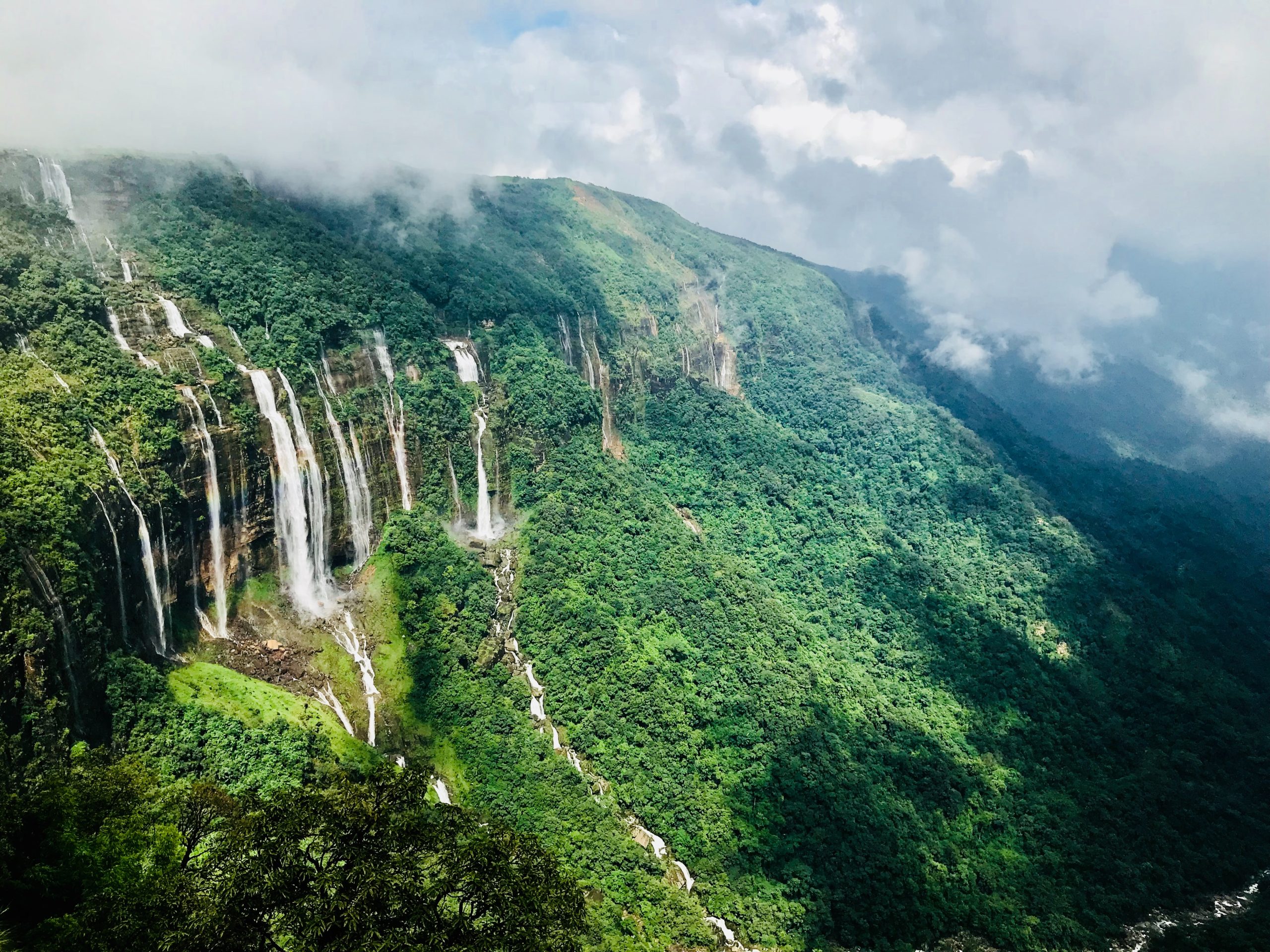
Published on 9 Sep
8 minutes read
Meghalaya FAQs – Frequently Asked Questions about Meghalaya
8 minutes read

Published on 11 Nov
5 minutes read
7 Day Trip to Meghalaya: Introduction to North-East
5 minutes read
TRIPS
Related Trips



.png)

Meghalaya with Kaziranga Backpacking Trip
Details
Inclusions
Safe Travel
Flexible Cancellation
Easy EMI
Certified Captains
24/7 Support
Overview
Meghalaya is famed as a backpacker’s paradise for several reasons especially its natural diversity, from rainforests to mountains, waterfalls to lakes, the abode of clouds is nothing short of a tropical paradise. This trip has been especially crafted for those seeking a rejuvenating yet gripping experience, where you get to explore the best of Meghalaya and the fabled UNESCO World Heritage Site, Kaziranga National Park. In India, the northeastern region comprises the seven sisters, among which Meghalaya stands as one state. It boasts the majestic beauty of the Great Himalayas, numerous rivers, breathtaking waterfalls, and serene lakes. A road trip to Meghalaya promises an exhilarating adventure, allowing you to immerse yourself in the magical landscapes and captivating sights. Situated at high altitudes, Meghalaya offers respite from the scorching summer heat, with temperatures hovering around 10-12 degrees Celsius, making it an ideal destination to escape the sweltering weather.
Exploring Meghalaya is a delight for any traveler, with renowned attractions such as the Living Root Bridges, Laitlum Canyon, Umiam Lake, Mawlynnong Village, and Seven Sisters Falls captivating visitors for years. A highlight of this trip is the safari to Kaziranga in Assam, an exhilarating experience not to be missed. The Elephant safari in Kaziranga stands out as one of the best wildlife experiences in this Meghalaya with Kaziranga backpacking trip, offering glimpses of majestic creatures such as tigers, lions, one-horned rhinoceroses, water buffaloes, elephants, swamp deer, and a plethora of bird species. Moreover, Meghalaya's rich culture, influenced by its history, is evident in the skilled craftsmanship of its people, showcased through traditional bamboo weaving, wood carving, and other artisanal endeavors. Meghalaya offers a plethora of activities to indulge in, with trekking being a particularly thrilling option. Camping amidst its picturesque landscapes allows for a rejuvenating escape from the hustle and bustle of daily life. Adventurous souls can also partake in activities like bungee jumping, rafting, and excursions, adding excitement to their Meghalaya experience. Exploring remote villages and heritage sites further enriches the journey, providing a glimpse into the region's rich cultural tapestry.
Itinerary
1
Day
Guwahati Arrival transfer to Shillong (98 kms, 4 Hours)
2
Day
Shillong to Shnongpdeng (88 kms, 3 Hours)
3
Day
Dawki to Cherrapunji (90 kms, 3 Hours)
4
Day
Trek to Double Decker Bridge | Overnight Stay in Cherrapunji
5
Day
Cherrapunji to Shillong (54 kms, 1 Hour)
6
Day
Shillong to Kaziranga (252 kms, 5 Hours)
7
Day
Early Morning Safari | Kaziranga to Guwahati (191 kms, 4 Hours)
Age Limit (Trip Wise)
Weekend
Getaways
18-38
Himalayan
Treks
18-48
Backpacking
Trips
18-40
Biking
Trips
18-45
Customized
Trips
No Limit
Pricing
Select Occupancy
+5% GST *
Batches
Pickup & Drop according to fixed timing. Transportation for local sightseeing: In Tempo Traveler/SUV from Guwahati to Guwahati. (For Tempo Traveler) Travelers who have opted for Bikes will be sightseeing with their respective Bikes. Accommodations: Two nights accommodation in Hotel in Shillong and Cherrapunji respectively. One night accommodation in camps in Shnongpdeng. One Night stay in Kaziranga Hotel. Meal plan: CP Plan (Total 7 Meals - 2 Meals on Day 2 (B+D) + 1 Meal on Day 3 (B) + 1 Meal on Day 4 (B) + 1 Meal on Day 5 (B) + 1 Meal on Day 6 (B) + 1 Meal on Day 7 (B) ) Cliff Jumping Snorkeling Boating Jeep Safari in Kaziranga Rental Bike & Fuel from Guwahati. Riding Gears: Knee guard, Elbow guard, Helmet. Note: Due to comfort and safety reasons, we recommend you all to carry your own helmets for the ride. The helmets which we provide are of standard size so there can be some discrepancies regarding the sizes. Medical and Mechanical Backup. Backup Vehicle. Bonfire (if Weather Permits) The trip Captain will be present at all times throughout the trip. . Parking and Entry Tickets. Local Guide for Double Decker Bridge. First Aid kits. Driver Allowances. |
Cancellation Policy
Credit Note :
The Booking Amount will be credited to your JW Profile which can be accessed by logging in to the website through your Email ID. Credit Notes issued have no date of expiry and can be used entirely in any of your future trips.
GST :
The Booking Amount will be credited to your JW Profile which can be accessed by logging in to the website through your Email ID. Credit Notes issued have no date of expiry and can be used entirely in any of your future trips.
Payment Policy
Things To Pack
Rucksack:
You must pick a good quality backpack with a comfortable fit and straps that won’t give you shoulder pain. You can check out your nearest Decathlon store for a good trekking backpack.
You must pick a good quality backpack with a comfortable fit and straps that won’t give you shoulder pain. You can check out your nearest Decathlon store for a good trekking backpack.
Day Bag / Day Pack:
When you head towards the summit, you are required to carry only a few necessary items and for that, you need a day backpack as you will leave your bigger one on the campsite.
When you head towards the summit, you are required to carry only a few necessary items and for that, you need a day backpack as you will leave your bigger one on the campsite.
Hiking Shoes :
Durable footwear designed for rugged terrains.
Durable footwear designed for rugged terrains.
Floaters or Sandals:
Although the entire trek requires a good quality shoe, you still need to let your feet breathe to avoid chafing and blisters. When you are at the camp, a good pair of sandals and floaters will help you to move freely.
Although the entire trek requires a good quality shoe, you still need to let your feet breathe to avoid chafing and blisters. When you are at the camp, a good pair of sandals and floaters will help you to move freely.
Tees / Tshirts:
You must keep at least three pairs of quick dry tees so that you can wash them in between stops for proper hygiene.
You must keep at least three pairs of quick dry tees so that you can wash them in between stops for proper hygiene.
Poncho:
A poncho is an evolved form of a raincoat that provides coverage to your body as well as your bag and ensures total water protection from rain.
A poncho is an evolved form of a raincoat that provides coverage to your body as well as your bag and ensures total water protection from rain.
Quick Dry Towel:
A quick dry towel will help in maintaining proper hygiene. It must dry quickly because the wet fabric will only increase the chance of bacterial growth.
A quick dry towel will help in maintaining proper hygiene. It must dry quickly because the wet fabric will only increase the chance of bacterial growth.
Sanitizer:
Essential for maintaining cleanliness while trekking.
Essential for maintaining cleanliness while trekking.
Sun Cap / Hat:
A lightweight sun cap with side flaps is perfect to keep your head cool and avoid sunburns on a sunny day.
A lightweight sun cap with side flaps is perfect to keep your head cool and avoid sunburns on a sunny day.
Sunscreen SPF 40+:
To avoid sunburns and chafing, you need to put on sunscreen as well as cold cream.
To avoid sunburns and chafing, you need to put on sunscreen as well as cold cream.
Water Bottle (Re-usable):
Hydration is extremely important when it comes to trekking. Carrying a water bottle that you can refill with Himalayan water is a must.
Hydration is extremely important when it comes to trekking. Carrying a water bottle that you can refill with Himalayan water is a must.
Personal Toiletries:
A bag with all your essentials including napkins, toothpaste, sanitizers, paper soap, etc should be carried in a ziplock bag.
A bag with all your essentials including napkins, toothpaste, sanitizers, paper soap, etc should be carried in a ziplock bag.
Personal Medication / First Aid:
A few cuts and bruises are almost inevitable when you are on a trek so carrying a medical kit with bandages, Dettol, etc is necessary.
A few cuts and bruises are almost inevitable when you are on a trek so carrying a medical kit with bandages, Dettol, etc is necessary.
Sun Glasses / Reading Glasses:
Photochromatic glasses are specs that are designed to transform into anti-glare shades depending upon exposure to the sun. They are good when it comes to eye protection but one can also opt for clip-on glasses etc.
Photochromatic glasses are specs that are designed to transform into anti-glare shades depending upon exposure to the sun. They are good when it comes to eye protection but one can also opt for clip-on glasses etc.
Charger:
To keep your electronic devices powered during the trip.
To keep your electronic devices powered during the trip.
Power Bank:
Ensures your devices stay charged when there are no outlets.
Ensures your devices stay charged when there are no outlets.
Personal Documents & ID's:
Identification proofs like Aadhar Card, Drivers License.
Identification proofs like Aadhar Card, Drivers License.
Laundry Bag (Waterproof):
In case your clothes get wet or your garments don’t dry, you can carry them in polythene. However, make sure that all the plastic that you are carrying into the woods leaves with you. Don’t litter in the mountains.
In case your clothes get wet or your garments don’t dry, you can carry them in polythene. However, make sure that all the plastic that you are carrying into the woods leaves with you. Don’t litter in the mountains.
Track Pants:
A good pair of track pants made of polyester will let your skin breathe. They’re lightweight, dry easily, and comfortable to walk around in. You can easily avoid chafing and rashes by investing in a good pair of track pants.
A good pair of track pants made of polyester will let your skin breathe. They’re lightweight, dry easily, and comfortable to walk around in. You can easily avoid chafing and rashes by investing in a good pair of track pants.
Trekking Shoes:
A good trekking shoe is comfortable, provides ankle support, and has a good grip as well. They shouldn’t be chunky, instead, they should be lightweight and sturdy.
A good trekking shoe is comfortable, provides ankle support, and has a good grip as well. They shouldn’t be chunky, instead, they should be lightweight and sturdy.
Cotton Socks:
Cotton socks are extremely comfortable to move around in and are lightweight as well which is why you can always count on a good pair of cotton socks while trekking. However, keep in mind to change them and avoid wearing them when they are wet.
Cotton socks are extremely comfortable to move around in and are lightweight as well which is why you can always count on a good pair of cotton socks while trekking. However, keep in mind to change them and avoid wearing them when they are wet.
Woolen Socks:
A good pair of woolen socks, especially merino, are comfortable, limit odors and provide adequate insulation from the cold so you can wear them at night.
A good pair of woolen socks, especially merino, are comfortable, limit odors and provide adequate insulation from the cold so you can wear them at night.
Woolen Gloves:
Insulated gloves help in maintaining proper body heat in your hands and also provide a better grasp on trekking poles.
Insulated gloves help in maintaining proper body heat in your hands and also provide a better grasp on trekking poles.
Main Jacket:
It’s emphasized that you need to carry proper layers so you can avoid getting cold which is why you need to carry a heavy jacket that you can put on over your other clothes.
It’s emphasized that you need to carry proper layers so you can avoid getting cold which is why you need to carry a heavy jacket that you can put on over your other clothes.
Woolen Cap:
A woolen cap will help prevent cold when you ascend to high altitude. You can also cover your ears to avoid any pain and discomfort you might face in them when going at high altitudes.
A woolen cap will help prevent cold when you ascend to high altitude. You can also cover your ears to avoid any pain and discomfort you might face in them when going at high altitudes.
Hoodie:
A versatile layering option for various temperatures.
A versatile layering option for various temperatures.
Scarf / Balaclava:
Along with sun rays and chilly winds, you also get hit by dirt and grime during treks which is why it's important to carry a scarf or balaclava so you can cover your face when needed.
Along with sun rays and chilly winds, you also get hit by dirt and grime during treks which is why it's important to carry a scarf or balaclava so you can cover your face when needed.
Head Lamp:
You can’t rely on moonlight when you are in the mountains. A torch or even a headlamp with a fresh pair of batteries is always a good idea to bring along.
You can’t rely on moonlight when you are in the mountains. A torch or even a headlamp with a fresh pair of batteries is always a good idea to bring along.
Trekking Pole:
The trekking pole assists in more than one way. It saves energy while also providing stability and helps you to maintain proper balance.
The trekking pole assists in more than one way. It saves energy while also providing stability and helps you to maintain proper balance.
Camera:
This should be obvious. To make sure that you get to capture all the great moments from your trek. Make sure that you have enough storage and some extra batteries as well.
This should be obvious. To make sure that you get to capture all the great moments from your trek. Make sure that you have enough storage and some extra batteries as well.
Riding Gear:
If your trip involves biking or motorcycling.
If your trip involves biking or motorcycling.
Moisturiser & Cold Cream:
To avoid sunburns and chafing, you need to put on sunscreen as well as cold cream.
To avoid sunburns and chafing, you need to put on sunscreen as well as cold cream.
Lip Balm:
Your lips can become chapped due to the harsh cold winds so it's important to keep them moisturized.
Your lips can become chapped due to the harsh cold winds so it's important to keep them moisturized.
Sanitary Pads:
Essential for feminine hygiene.
Essential for feminine hygiene.
Insect Repellent:
Guards against pesky bugs and insects.
Guards against pesky bugs and insects.
Cash:
Emergency funds for unexpected situations.
Emergency funds for unexpected situations.
Thermals:
Thermal is a piece of garment that helps in keeping your body warm in cold temperatures. It is a necessary item that you need when going on a high-altitude trek.
Thermal is a piece of garment that helps in keeping your body warm in cold temperatures. It is a necessary item that you need when going on a high-altitude trek.
Snacks / Dryfruits / Energy Bar:
Provides quick energy on the go.
Provides quick energy on the go.
Positive Attitude:
The most important item for a successful trek or trip, keeping your spirits high and adaptable to the challenges of the journey.
The most important item for a successful trek or trip, keeping your spirits high and adaptable to the challenges of the journey.
FAQs
Does Meghalaya have an airport?
Yes, Meghalaya has an airport that is well-connected to other states. Shillong Airport is the city's official airport and is situated at a distance of about 30 km from central Shillong. However, our backpacking trip to Meghalaya starts from Guwahati as we’ve included jungle safari tour of Kaziranga National Park in our itinerary.
What services are included in this itinerary of the Meghalaya Kaziranga backpacking trip?
We provide the best in class accommodations, transportation as well as surface transfer wherever possible, meals as per the itinerary, and activities as per the itinerary. Along with that, an experienced trip leader equipped with a medical kit stays with the group at all times. All kinds of permits, toll taxes, parking charges, and driver allowances are also included.
How many days are enough for a Meghalaya backpacking trip?
Depending on the kind of trip you're planning and the places you're seeking to explore, anywhere between 4-8 days is enough to explore some of the main attractions of Meghalaya. Since Shillong and Cherrapunji are nearby, one can explore both of these regions in 4-5 days. However, a full-fledged backpacking trip to Meghalaya requires 8 days.
What is the best time to plan a Meghalaya backpacking trip?
The best time to visit Meghalaya is from September to March. These are the months when the state of Meghalaya has the most pleasant weather with neither extreme winters nor heavy rainfalls. You will be able to experience all the activities and adventures to the fullest.
What are the best places to visit in Meghalaya?
There are a lot of places that one should visit when it comes to Meghalaya but the ones that you simply can't miss are as follows:
Cherrapunji: Witness sparkling waterfalls such as Dain-Thlen, Kynrem, and Nohkalikai here.
Dawki: Float in the turquoise waters of Umngot River.
Mawsynram: The wettest place in the world.
Shillong: The best hill station to experience. You can explore Elephant Falls, go boating in Umiam Lake or simply visit the local markets as well.
Mawlynnong Village: The cleanest village in Asia.
Baghmara: Go to Baghmara Reserve Forest which is an abode to exotic wildlife that you can get a closer look at.
A Magical Journey to Backpacker’s Paradise
Fall in love with waterfalls
Fall in love with rain
Fall in love with caves and bridges
Fall in love with the sky and clouds
Fall in love with yourself and Meghalaya
Welcome to the land that makes you fall in love with everything and anything!!!
Meghalaya backpacking offers an unforgettable experience amidst some of the most breathtaking landscapes in India. Known as the "Abode of Clouds," Meghalaya is characterized by its lush green hills, dense forests, and stunning waterfalls, making it a paradise for nature lovers and adventure seekers alike. The state's unique biodiversity and rich cultural heritage are evident in its vibrant local communities and traditional practices. A Meghalaya group tour typically includes visits to iconic sites such as the living root bridges in Cherrapunji and the pristine waters of Dawki, where travelers can enjoy activities like boating and cliff jumping. The ideal time for such adventures is from October to March, when the weather is pleasant, allowing for comfortable exploration of its scenic trails and hidden gems. Whether you're trekking through steamy jungles or savoring local cuisines, Meghalaya backpacking promises a blend of excitement and tranquility that will leave lasting memories.
How to Reach Meghalaya
Reaching Meghalaya, a stunning destination for nature enthusiasts and adventure seekers, is quite convenient due to its well-connected transport options. Known for its lush landscapes and vibrant culture, Meghalaya backpacking and Meghalaya group tours provide an ideal way to explore this enchanting state.
By Air
The most efficient way to reach Meghalaya is by air. The nearest airport is Umroi Airport, located about 30 kilometers from Shillong, but it has limited flight options. The major gateway is Lokpriya Gopinath Bordoloi International Airport in Guwahati, Assam, which is approximately 120 kilometers away. From Guwahati, travelers can easily hire a taxi or take a bus to Shillong, making it a popular choice for those embarking on a Meghalaya group tour or backpacking adventure.
By Train
Meghalaya does not have its own railway station; the closest one is Guwahati Railway Station, around 96 kilometers from Shillong. Trains from major cities in India, such as Delhi and Kolkata, connect to Guwahati. Upon arrival, travelers can take a taxi or bus to reach their destination in Meghalaya, facilitating smooth transitions for both solo backpackers and group travelers.
By Road
For those who prefer road travel, Meghalaya is well-connected by highways. The journey from Guwahati to Shillong via National Highway 6 is scenic and smooth, making it an enjoyable option for backpackers. Public buses and private taxis are readily available, allowing travelers to experience the local scenery and culture along the way. This route is particularly favored by those on a Meghalaya group tour, as it offers flexibility and the chance to explore various attractions en route.
With these accessible transport options, embarking on a Meghalaya backpacking trip or joining a group tour becomes an exciting and hassle-free experience, allowing travelers to immerse themselves in the state's breathtaking beauty and rich cultural heritage.
Read More: How to Reach Meghalaya
Best Time to Visit Meghalaya
Meghalaya, renowned for its stunning landscapes and rich cultural heritage, is a captivating destination for travelers seeking adventure and natural beauty. The best time to visit this enchanting state varies by season, making it essential to plan your Meghalaya backpacking or Meghalaya group tour accordingly.
Winter (November to February)
Winter is considered the peak season for visiting Meghalaya, with pleasant weather and clear skies. Temperatures range from 4°C to 16°C, making it ideal for outdoor activities like trekking and exploring the state's famous caves and waterfalls. This season also features vibrant cultural festivals, such as Shad Suk Mynsiem in April, providing a unique glimpse into local traditions. The dry conditions during these months allow for comfortable exploration of popular sites like Shillong and Cherrapunji, making it a prime time for group tours and backpacking adventures.
Spring (March to April)
Spring marks a transitional period with temperatures ranging from 15°C to 25°C. This time is characterized by blooming flowers and lush greenery, making it a beautiful backdrop for sightseeing. Although occasional showers may occur, the weather remains mostly sunny, perfect for exploring attractions like the Living Root Bridges and Ward’s Lake. Spring is also a great time for those on a Meghalaya group tour to enjoy fewer crowds and more affordable accommodation options.
Monsoon (May to September)
The monsoon season brings heavy rainfall, transforming Meghalaya into a lush paradise. While the landscape flourishes, with waterfalls at their most spectacular, travel can be challenging due to slippery roads and occasional landslides. Temperatures during this period range from 15°C to 30°C. Although outdoor activities may be limited, the monsoon offers a unique experience for those willing to embrace the rain, and budget travelers can benefit from lower accommodation rates. However, this season is generally not recommended for extensive backpacking or group tours due to unpredictable weather conditions.
Autumn (October)
October marks the end of the monsoon season, and the landscape is still vibrant and lush. The weather begins to stabilize, with temperatures ranging from 20°C to 30°C. This month is ideal for those looking to experience the beauty of Meghalaya without the heavy rains, making it a great time for outdoor activities and cultural exploration. The clear skies and pleasant temperatures create a perfect setting for photography and sightseeing, appealing to both backpackers and group travelers alike.
Choosing the right time to visit Meghalaya can significantly enhance your experience, whether you're embarking on a solo backpacking journey or joining a Meghalaya group tour. Each season offers its unique charm, ensuring that every visit is memorable.
Read More: Best Time to Visit Meghalaya
Places to visit in Meghalaya
Meghalaya is a treasure trove of natural beauty and cultural richness, making it an ideal destination for travelers seeking adventure through backpacking or organized group tours. The state boasts a variety of breathtaking places to visit, each offering unique experiences that highlight the region's stunning landscapes and vibrant traditions.
Living Root Bridges, Nongriat
The Living Root Bridges, particularly the famous Double Decker Root Bridge, are a testament to the ingenuity of the Khasi people. These bridges are made from the roots of rubber trees and take years to grow. Trekking to these bridges is a rewarding experience, showcasing Meghalaya's unique ecological and cultural heritage. This site is perfect for those who enjoy hiking and want to immerse themselves in the local environment during their backpacking journey.
Dawki and the Umngot River
Dawki is known for its crystal-clear waters of the Umngot River, making it a popular spot for boating and adventure sports. The picturesque scenery and tranquil atmosphere make it an ideal location for camping and relaxation. Backpackers and groups can enjoy activities such as cliff jumping and zip-lining, creating unforgettable memories in this stunning landscape.
Cherrapunji (Sohra)
Cherrapunji, often referred to as Sohra, is famous for its heavy rainfall and lush landscapes. It offers numerous attractions, including the Seven Sisters Falls and Mawsmai Cave, which are perfect for exploration. This area is also known for its rich biodiversity, making it a great stop for nature lovers on a Meghalaya group tour.
Mawlynnong Village
Recognized as one of the cleanest villages in Asia, Mawlynnong is a charming destination that showcases the local way of life. Visitors can explore the village, interact with the friendly locals, and enjoy the stunning views of the surrounding hills. This village is a great addition to any Meghalaya backpacking itinerary, offering a glimpse into the region's culture and sustainability practices.
Nohkalikai Falls, Cherrapunji
Renowned as one of the tallest waterfalls in India, Nohkalikai Falls is an iconic site in Cherrapunji. The waterfall plunges from a height of 1,100 feet, creating a mesmerizing view. The area around the falls is rich in lush greenery and offers trekking opportunities, making it a highlight for those on a Meghalaya group tour or adventurous backpackers looking to explore the natural wonders of the region.
Elephant Falls, Shillong
One of the most accessible and picturesque spots in Meghalaya, Elephant Falls is a must-visit for anyone on a Meghalaya backpacking trip. The waterfall cascades beautifully through three tiers, providing a perfect backdrop for photography and relaxation. The surrounding area features well-maintained paths that allow visitors to get up close to the falls, making it an excellent spot for both solo travelers and groups.
Each of these destinations highlights the diverse experiences that Meghalaya has to offer, making it a perfect choice for both backpackers and those on a Meghalaya group tour. From breathtaking waterfalls to unique cultural sites, every visit promises adventure and discovery in this beautiful state.
Read More: Best Places to Visit in Meghalaya
Things to do in Meghalaya
Meghalaya is a captivating destination that offers a myriad of activities for adventure seekers and nature lovers alike. Whether you’re embarking on a thrilling Meghalaya backpacking journey or joining a Meghalaya group tour, there are countless things to do that will enrich your experience and create lasting memories.
Trek to the Living Root Bridges
One of the most iconic activities in Meghalaya is trekking to the Living Root Bridges, particularly the Double Decker Root Bridge in Cherrapunji. This unique marvel of nature showcases the ingenious methods of the Khasi people, who have trained the roots of rubber trees to form sturdy bridges. The trek through lush forests leading to the bridge is equally breathtaking, making it a highlight for both solo backpackers and group travelers.
Explore Mawsmai Cave
Exploring Mawsmai Cave is an exhilarating adventure that should not be missed. Known for its stunning stalactite and stalagmite formations, this limestone cave offers a thrilling experience as visitors navigate through its narrow passages. The cave’s mysterious ambiance and geological wonders make it a popular attraction for those on a Meghalaya group tour or adventurous backpackers looking for unique experiences.
Water Sports at Umiam Lake
Umiam Lake, located near Shillong, is a hub for water sports enthusiasts. Visitors can indulge in activities such as kayaking, jet skiing, and boating while surrounded by the serene beauty of the lake and its lush surroundings. Camping around Umiam Lake is also a popular option, allowing travelers to immerse themselves in nature while enjoying the tranquility of this picturesque location.
Visit Dawki and the Umngot River
Dawki is famous for its crystal-clear waters of the Umngot River, making it an ideal spot for boating and photography. A boat ride here offers stunning views of the surrounding landscape and is a must-do for anyone on a Meghalaya backpacking trip. The vibrant local culture and friendly villagers add to the charm of this beautiful destination.
Trekking at Laitlum Canyon
For those seeking panoramic views, trekking at Laitlum Canyon is a rewarding experience. The trek offers breathtaking vistas of the valleys and hills, enveloped in clouds, creating a magical atmosphere. This spot is perfect for nature lovers and photographers looking to capture the stunning landscapes that Meghalaya is known for.
Visit Mawlynnong Village
Recognized as one of the cleanest villages in Asia, Mawlynnong offers travelers a glimpse into sustainable living and local culture. Visitors can explore the village, enjoy the scenic beauty, and interact with the welcoming locals. This experience is ideal for those on a Meghalaya group tour who wish to learn about the region's traditions and practices.
These activities highlight the diverse experiences available in Meghalaya, making it a perfect choice for both backpackers and those on a Meghalaya group tour. From breathtaking treks to thrilling water sports, every moment spent in this enchanting state promises adventure and discovery.
Read More: Adventure Activities to do in Meghalaya
Major Festivals of Meghalaya
Meghalaya is a state rich in cultural heritage, and its festivals are a testament to the vibrant traditions of its diverse ethnic groups. From harvest celebrations to religious observances, these festivals showcase the unique customs and beliefs of the Khasi, Jaintia, and Garo communities.
Shad Suk Mynsiem
One of the most important festivals for the Khasi people, Shad Suk Mynsiem is a three-day thanksgiving celebration held in April. It involves traditional dances performed by unmarried girls dressed in their finest attire, while men circle them brandishing swords, symbolizing the protection of women's honor.
Nongkrem Festival
The Nongkrem Festival, celebrated annually in Smit, is a five-day event that honors the Khasi goddess Ka Blei Synshar. It is a feast for the senses, with vibrant dances performed by men in colorful costumes holding swords, and young women in traditional dress.
Behdienkhlam Festival
The Behdienkhlam Festival is the most significant celebration for the Jaintia people. It is a thanksgiving festival aimed at seeking blessings for a bountiful harvest and protection from disease. The festival culminates in a playful battle between two groups, followed by an evening of merriment.
Shad Sukra Festival
The Shad Sukra Festival, celebrated by the Jaintia community in April or May, marks the beginning of the sowing season. Rituals and dances accompanied by drums and flutes are performed by men and women adorned in traditional gold ornaments, praying for a fruitful season.
Wangala Festival
The Wangala Festival, also known as the Hundred Drums Festival, is a post-harvest celebration of the Garo people. It honors Misi-A-Gilpa-Saljong-Galapa, the god of fertility. The festival features synchronized dances performed by boys and girls to the rhythmic beats of drums.
These festivals not only showcase the cultural richness of Meghalaya but also provide an opportunity for visitors to immerse themselves in the state's vibrant traditions. Whether you're interested in witnessing the intricate dances, savoring the local cuisine, or experiencing the warm hospitality of the people, Meghalaya's festivals promise an unforgettable experience.
Read More: Festivals in Meghalaya
Travel like a Wraveler (You smartie)
Here are some essential travel tips for visiting Meghalaya, perfect for those planning a Meghalaya backpacking adventure or a Meghalaya group tour:
- Know the Permits: Certain areas in Meghalaya require permits, especially near borders and restricted zones. Research in advance to ensure you have the necessary documents, such as the Protected Area Permit, to avoid any inconveniences during your trip.
- Book in Advance: Meghalaya experiences a significant influx of tourists, particularly during the winter months. To secure accommodations and transportation, make all your bookings well in advance to avoid last-minute hassles and higher prices.
- Pack Smart: Efficient packing is crucial. Include essentials like warm clothing, portable chargers, and extra camera batteries. Leave some space for local purchases, as you might want to buy unique handicrafts or souvenirs during your Meghalaya backpacking trip.
- Carry Cash: Many local shops and markets in Meghalaya may not accept electronic payments, so it’s wise to carry sufficient cash. Keep an eye out for ATMs, especially in remote areas, to avoid running out of money mid-trip.
- Stay Safe During Adventures: Meghalaya offers a range of adventure sports. Always prioritize safety by understanding the rules and guidelines for each activity. Ensure you are adequately prepared and trained before engaging in activities like trekking or water sports.
- Respect Local Culture: Engage with the local communities respectfully. Understanding and appreciating the customs and traditions of the Khasi and Jaintia tribes will enhance your experience and foster positive interactions during your Meghalaya group tour.
- Be Prepared for Weather Changes: Meghalaya is known for its unpredictable weather, especially during the monsoon season. Carry waterproof gear and be ready for sudden rain showers, which can enhance the beauty of the lush landscapes.
By keeping these travel tips in mind, you can ensure a smooth and enjoyable experience while exploring the breathtaking beauty of Meghalaya, whether you're backpacking solo or traveling with a group.
Why Travel with JustWravel?
Since you have finalized your travel destination as Meghalaya, let us explain why you should join the safest travel community in India. Whoops, you already know the main reason—safety is what we’re talking about here.
- Coolest Trip Captains: Our AMC-certified Trip Leads embody the motto ‘From the mountains, Of the mountains, and For the mountains.’ They possess in-depth knowledge of the trails and local culture, ensuring a safe and enriching experience.
- Biggest On-Ground Operations Team: With a robust team of over 100 individuals providing 24-hour local support, we guarantee you have access to the latest information about roads and destinations before you embark on your journey.
- Handpicked Itineraries: Each itinerary is meticulously researched and curated to match your vacation dreams, ensuring you visit the best locations and offbeat spots within your time frame.
- Delectable Food: Whether you’re trekking through mountains or exploring hidden gems, you’ll enjoy top-notch cuisine that combines nutrition and scrumptious flavors, enhancing your travel experience.
- Comfortable Stay and Secure Transportation: We prioritize your comfort and safety, providing reliable accommodations and transportation throughout your journey.
- 7+ Years of Experience in Northeast: With over seven years of expertise in organizing trips to Northeast India, we understand the nuances of the region, ensuring a smooth and enjoyable travel experience.
- The Perfect Mixture of Adventure, Fun, and Self-Discovery: Our trips are designed to offer a blend of thrilling adventures and opportunities for personal growth, making your journey not just a vacation but a transformative experience.
Kaziranga National Park - Jewel from Assam
Do you believe that good things come in pairs? And what if the pair consists of neighboring states? That’s the case for Meghalaya and Kaziranga. Like fries with a burger, or mac and cheese, Kaziranga is the perfect buddy for Meghalaya. Make sure you visit both with your go-to buddy—after all, traveling is about the people you love, right? On the last day of your Meghalaya bike and backpacking adventure, we will be heading to Kaziranga National Park for this reason.
Kaziranga National Park, a UNESCO World Heritage site located in Assam, India, is renowned for its exceptional biodiversity and is home to the largest population of the Indian one-horned rhinoceros. Spanning over 430 square kilometers, the park features a mix of grasslands, wetlands, and dense forests, providing a rich habitat for various wildlife species, including tigers, elephants, wild buffalo, and numerous bird species. The park is traversed by the Brahmaputra River, enhancing its scenic beauty and ecological significance.
How to Reach
Kaziranga is accessible via several transport options. The nearest airports are Guwahati International Airport (217 km away) and Jorhat Airport (97 km away), both of which offer taxi and bus services to the park. The closest railway station is Furkating Junction, located 75 km from Kaziranga, with connections to major cities like Guwahati and Kolkata. From these points, travelers can hire cabs or take state-run buses to reach the park's entrance at Kohora, situated on National Highway 37.
Best Time to Visit
The ideal time to explore Kaziranga National Park is from November to April, when the weather is pleasant and wildlife sightings are more frequent. During these months, the park is open to visitors, allowing them to engage in safaris organized by the park authorities.
Animals to Look Out For
Visitors to Kaziranga can expect to see a variety of wildlife, including:
- Indian One-Horned Rhinoceros: The park is home to over two thousand of these magnificent creatures.
- Bengal Tigers: Kaziranga has a significant population of tigers.
- Indian Elephants: These gentle giants are often seen roaming the park.
- Wild Water Buffalo: Known for their impressive size, they inhabit the wetlands.
- Bird Species: The park is a birdwatcher's paradise, featuring species like the Great Hornbill and various migratory birds.
Things to Pack for a Safari
When planning a safari in Kaziranga, consider packing the following essentials:
- Binoculars: For wildlife viewing from a distance.
- Camera: To capture the stunning landscapes and wildlife.
- Comfortable Clothing: Lightweight, breathable fabrics suitable for warm weather.
- Sturdy Footwear: Ideal for walking safaris and navigating uneven terrain.
- Insect Repellent: To protect against mosquitoes and other insects.
- Sunscreen: To shield your skin from UV rays during daytime excursions.
Kaziranga National Park offers a unique opportunity to experience India's rich wildlife heritage, making it a must-visit destination for nature enthusiasts and adventure seekers alike.
Similar Packages
VIDEOS
Memories for Life
posts
Instagram Images
REVIEWS
What our Clients Say About Us
blogs
Our Blogs

Published on 12 Nov
11 minutes read
Meghalaya Travel Guide | Things To Keep In Mind Before Heading To Meghalaya
11 minutes read

Published on 9 Sep
8 minutes read
Meghalaya FAQs – Frequently Asked Questions about Meghalaya
8 minutes read

Published on 11 Nov
5 minutes read
7 Day Trip to Meghalaya: Introduction to North-East
5 minutes read

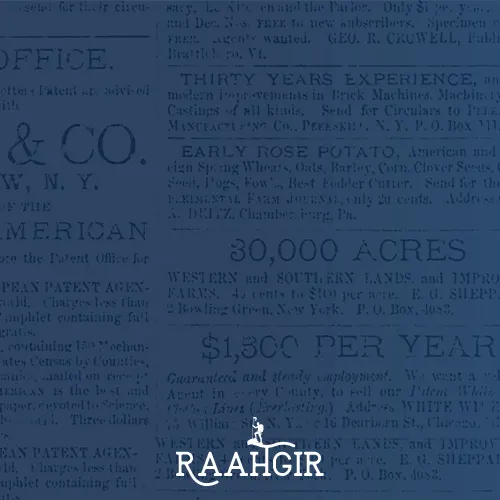
Newsletter
Sign up now!
Be the first one to know all about the Exciting Offers, Travel Updates and more.

B-42, 2nd Floor, Tower- B, The Corenthum, Block A, Sector 62, Noida, Uttar Pradesh 201301
© 2015-2025 JustWravel Pvt. Ltd.
Starts From

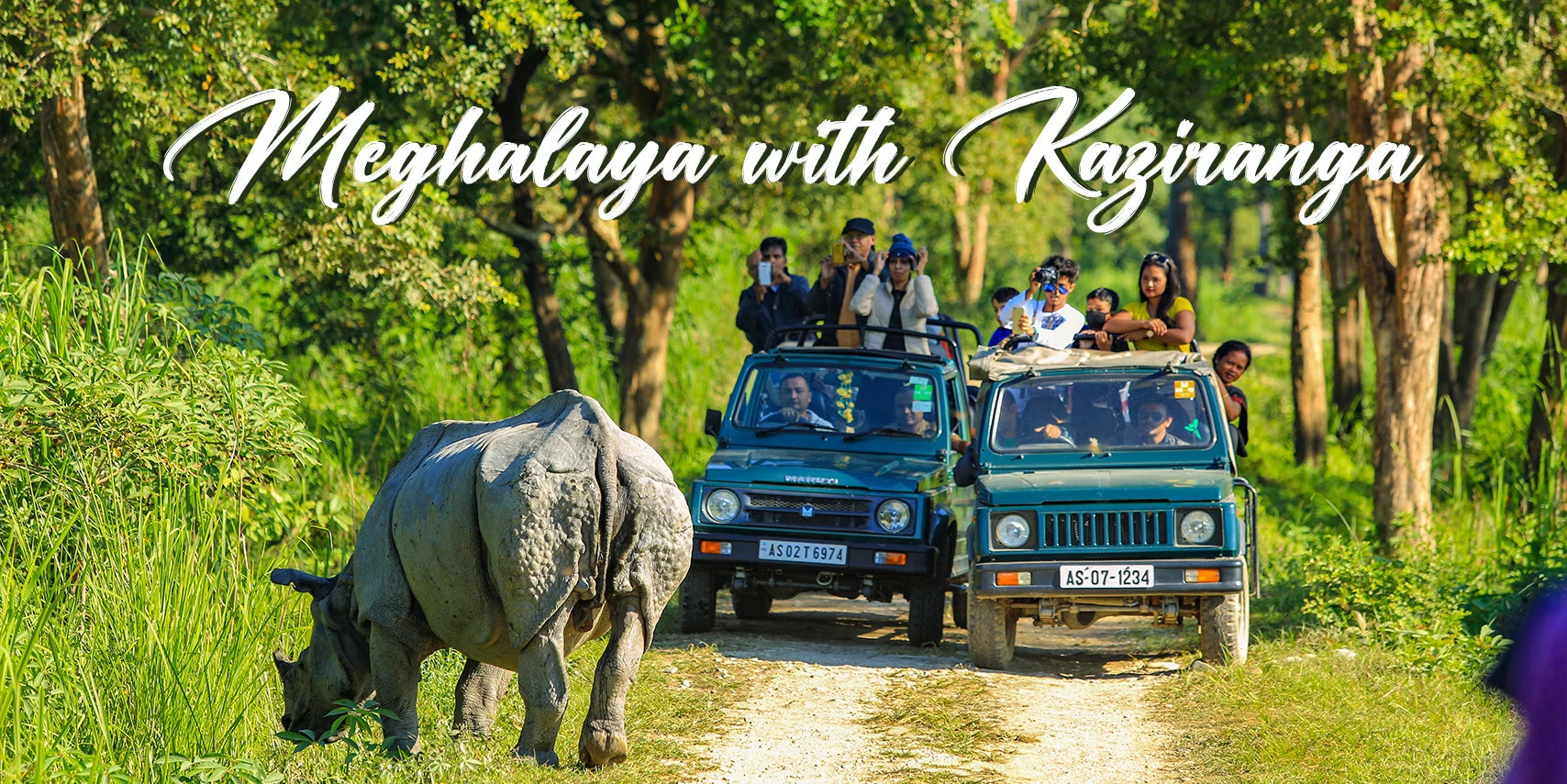

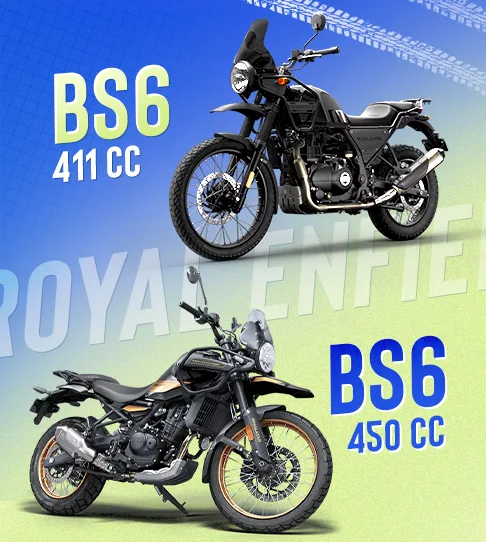
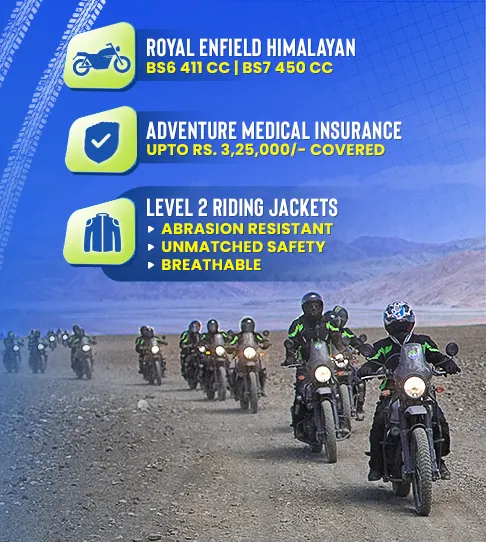
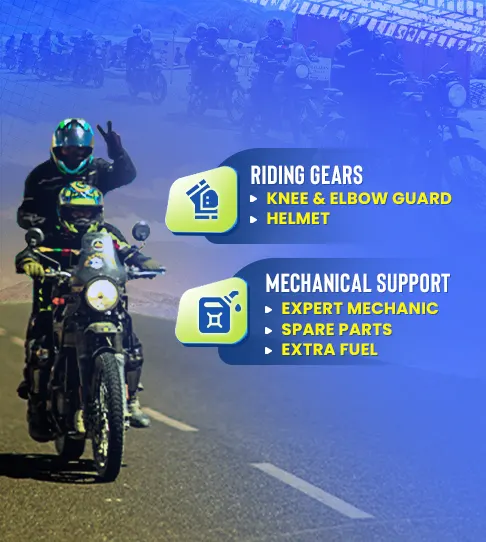
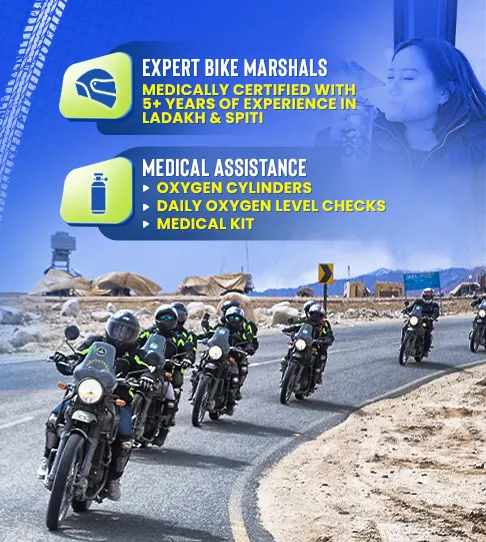
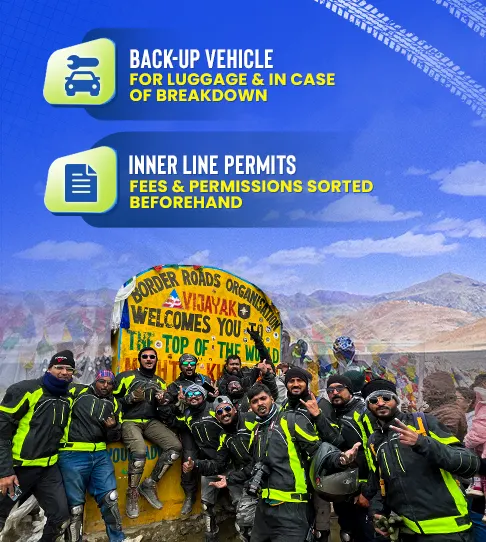

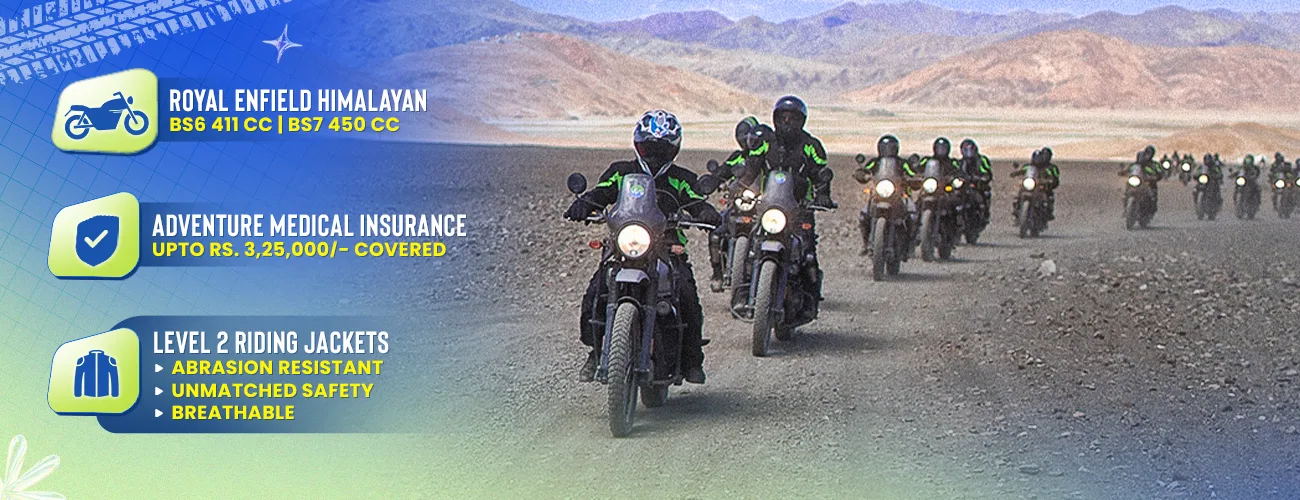
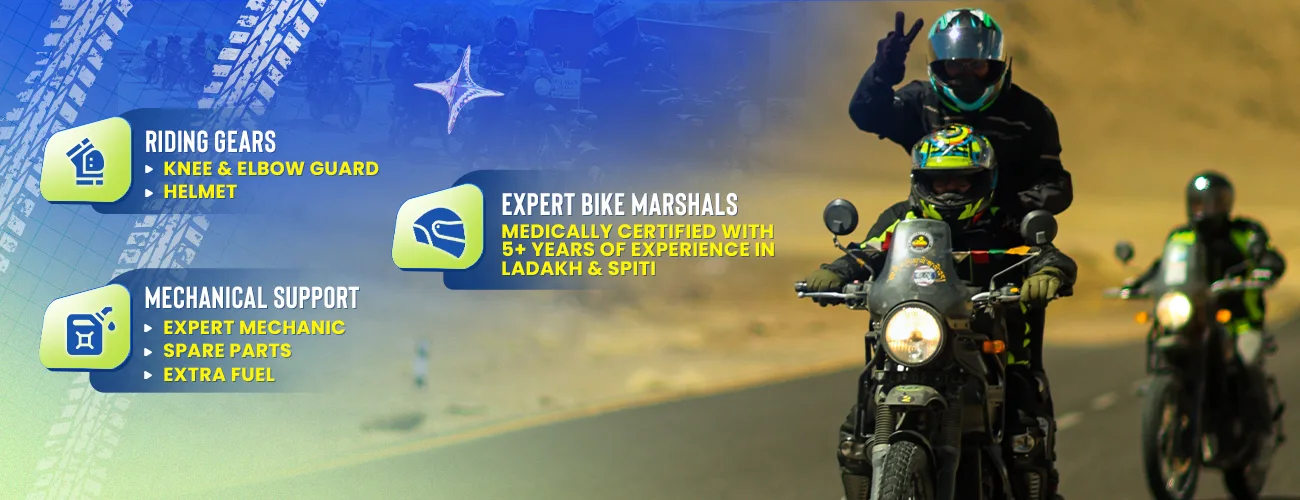
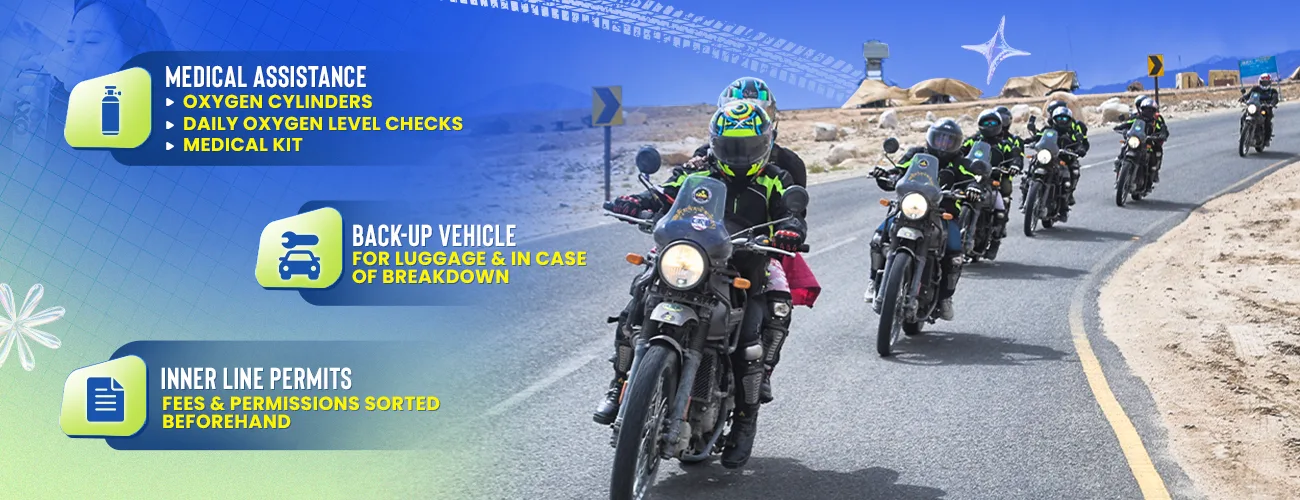



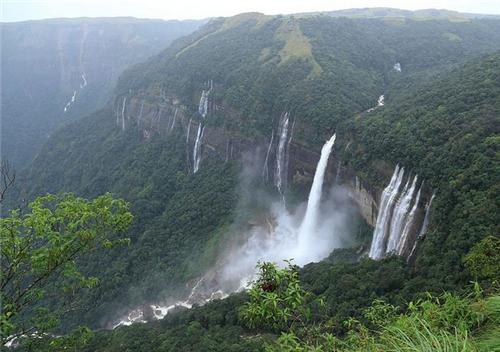




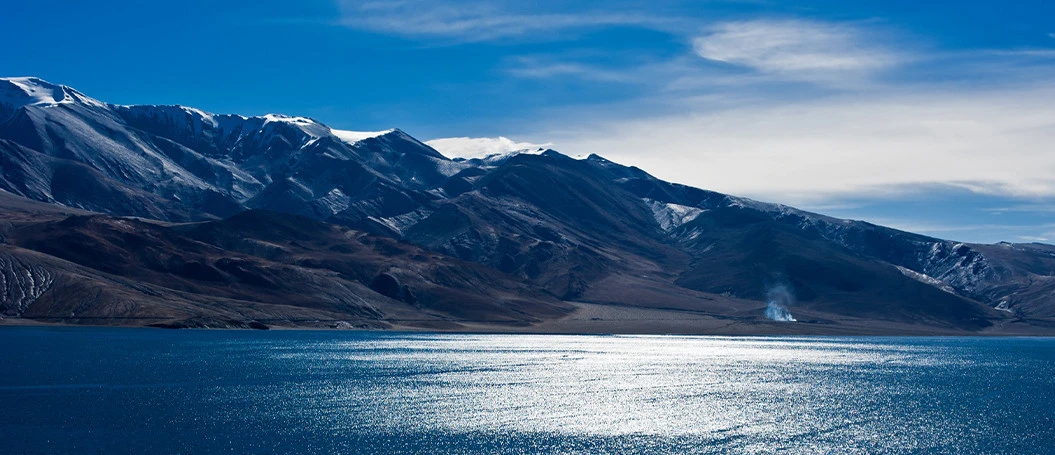



.jpg.webp)
